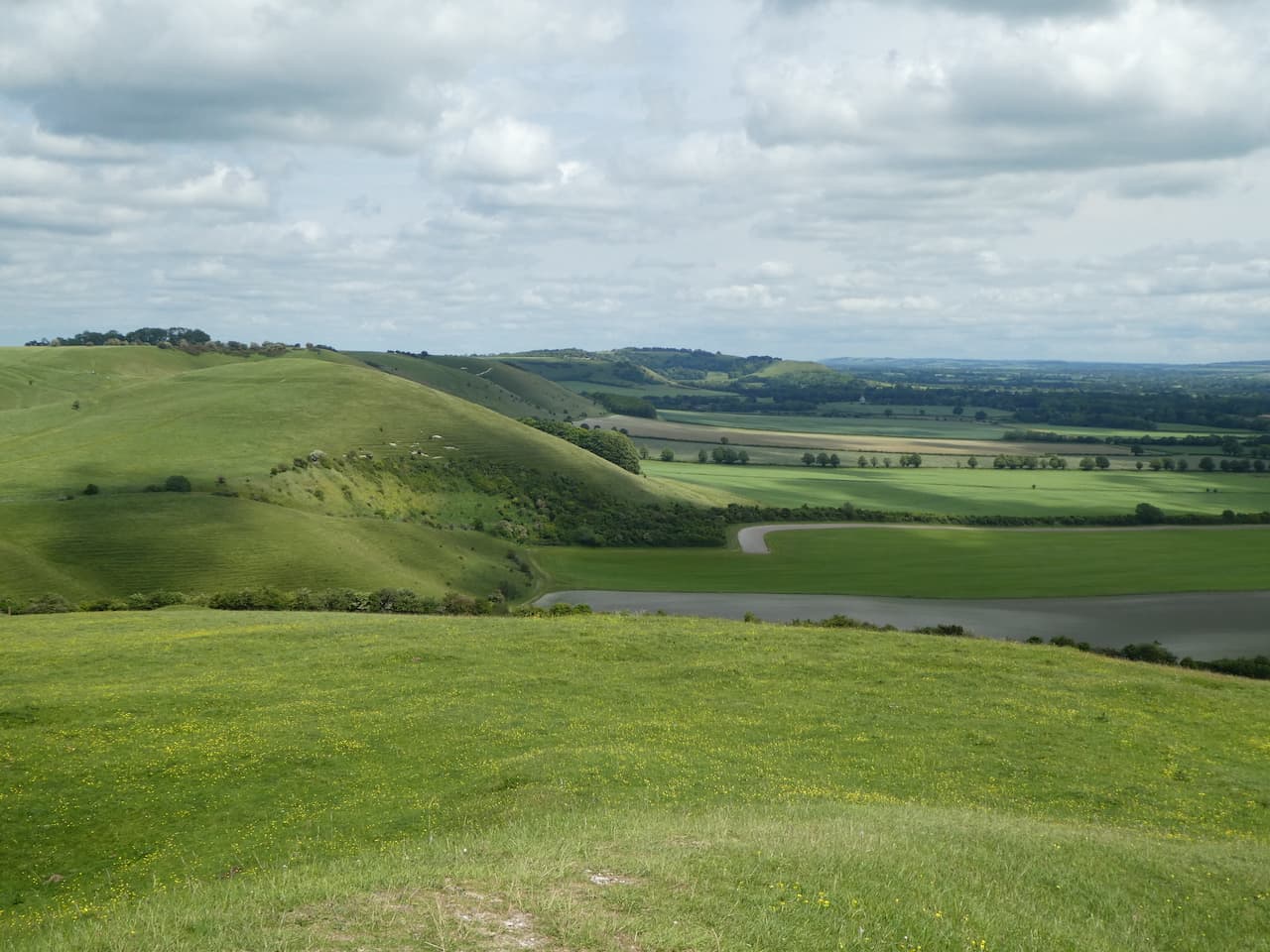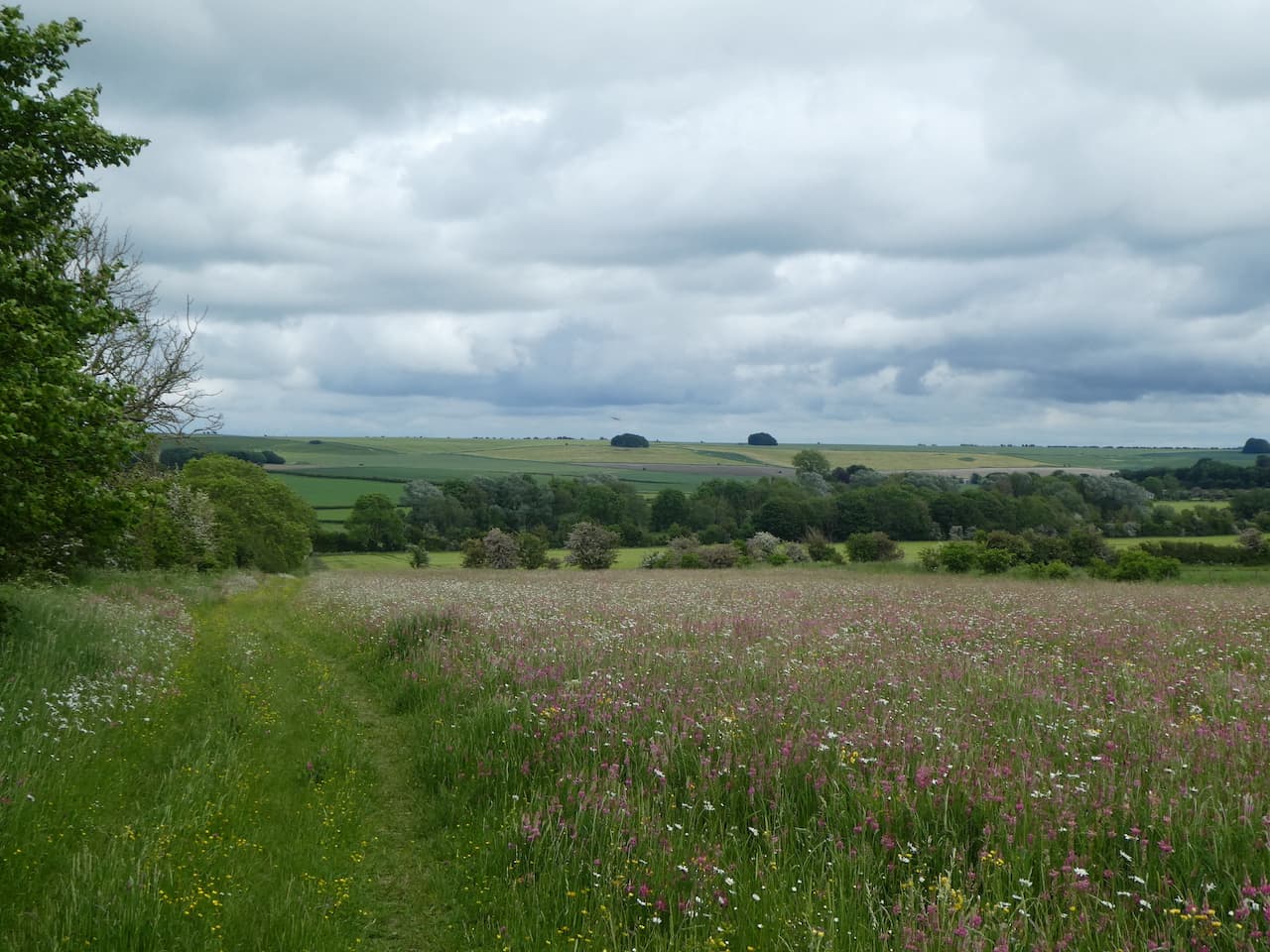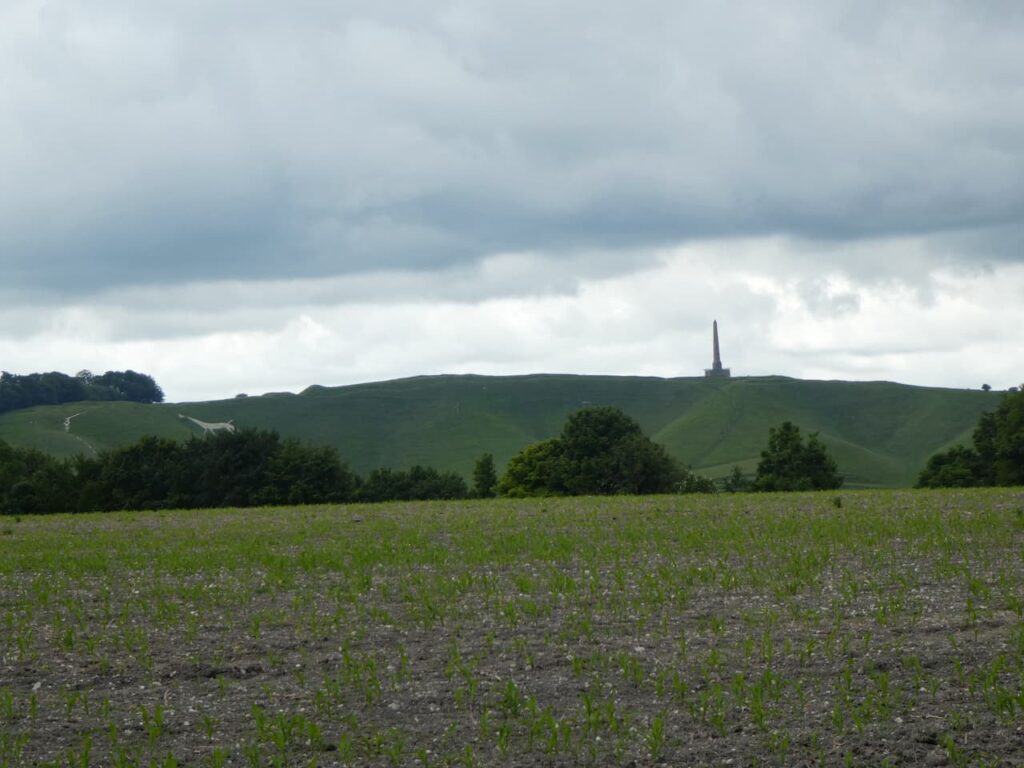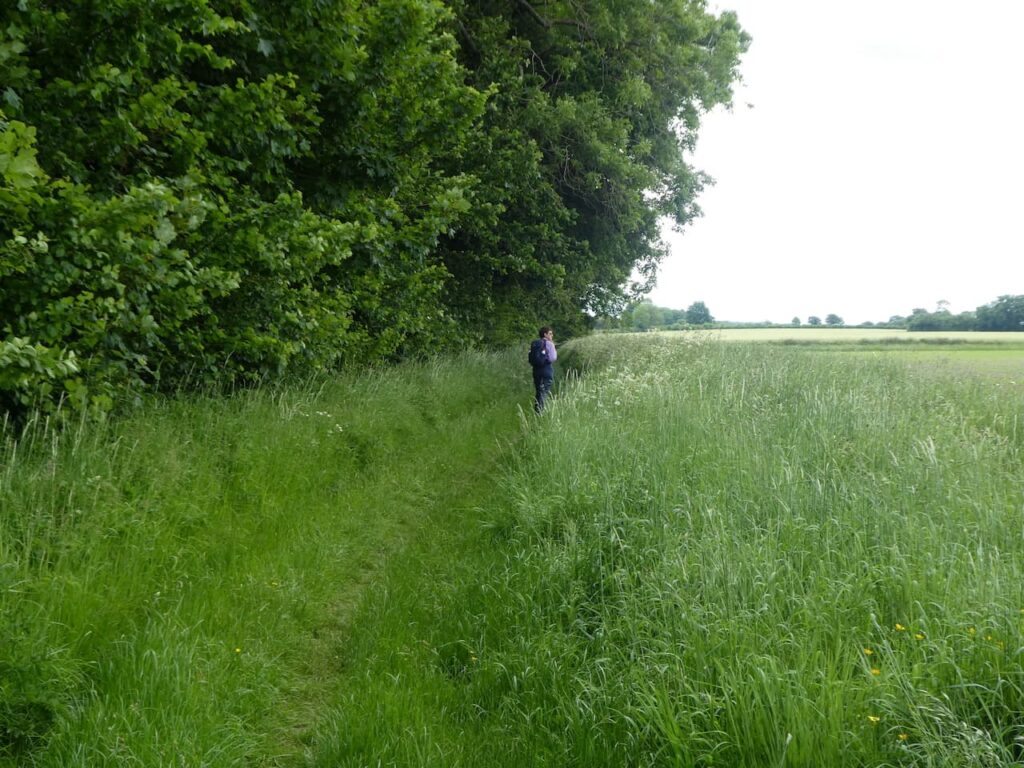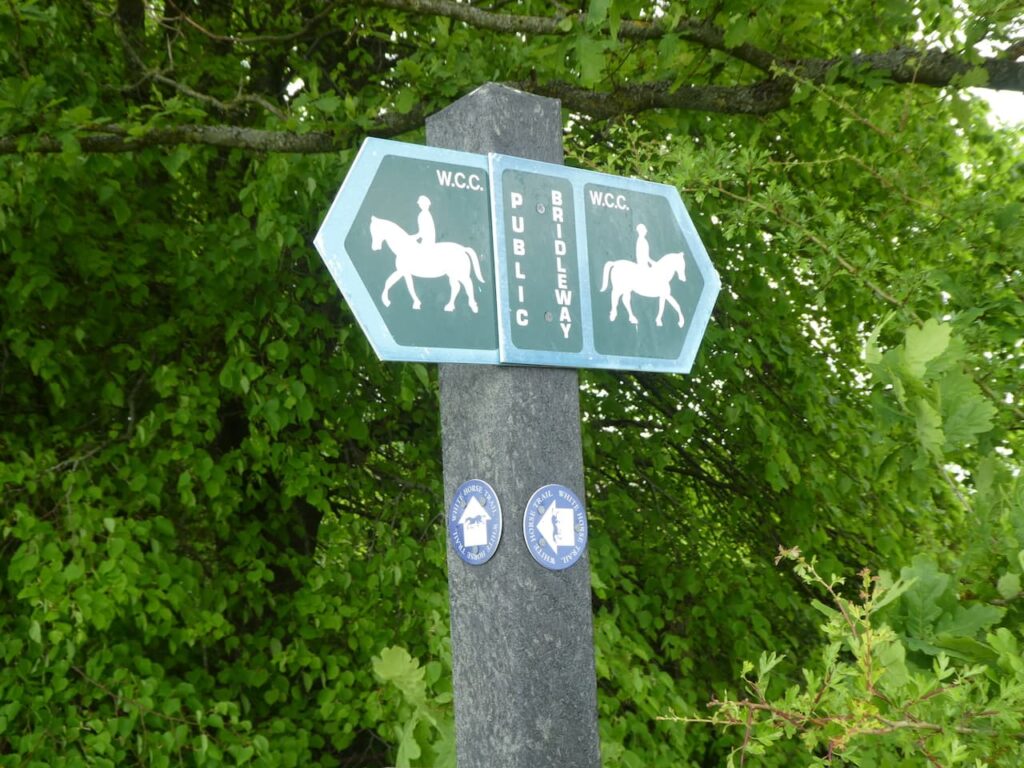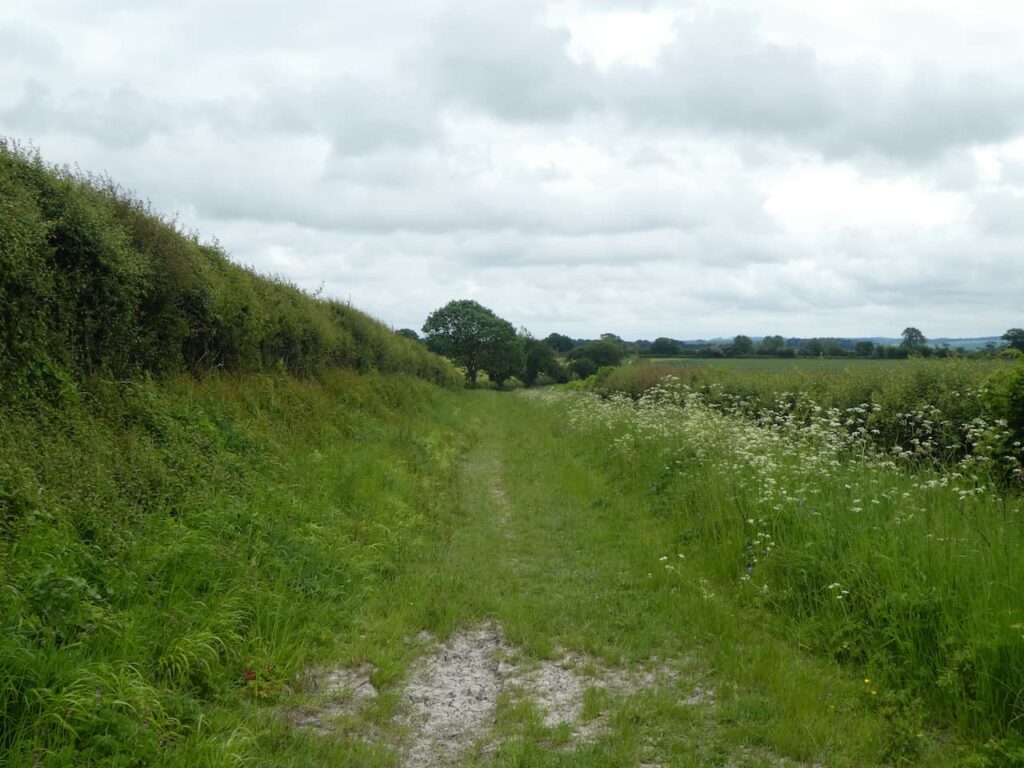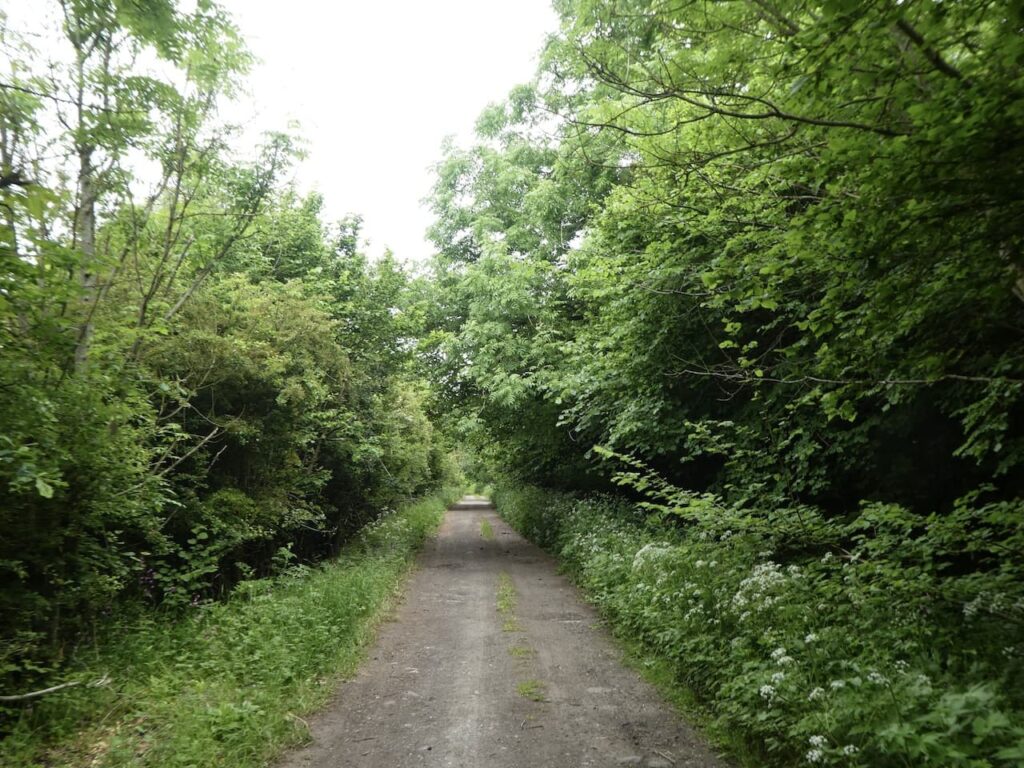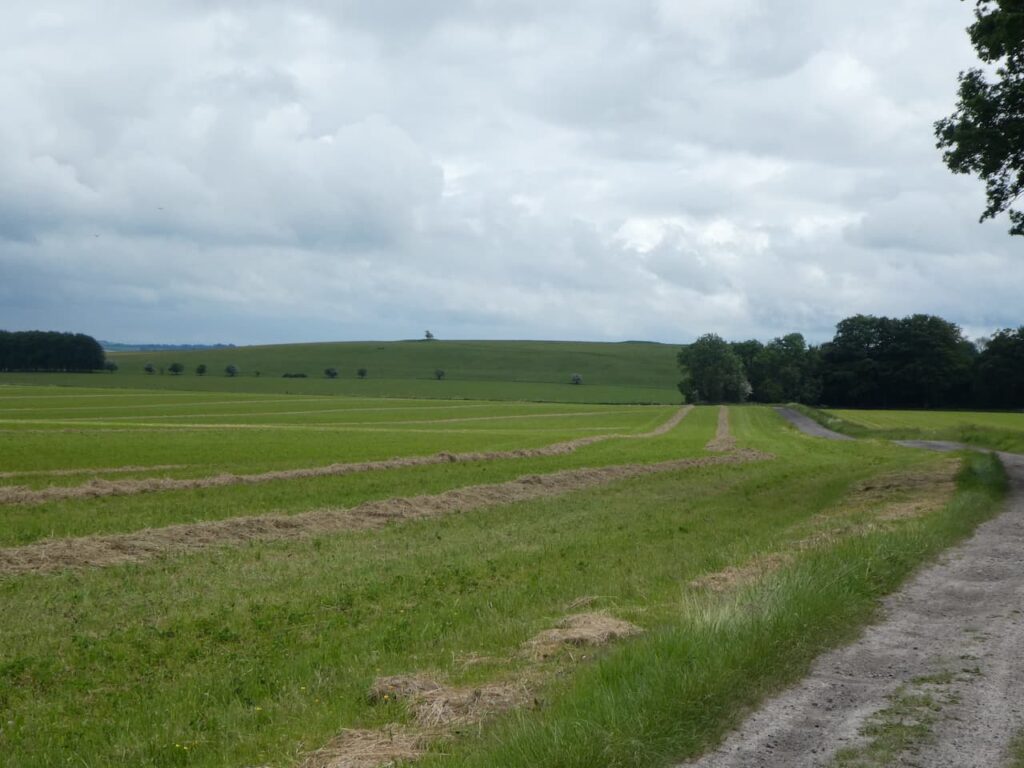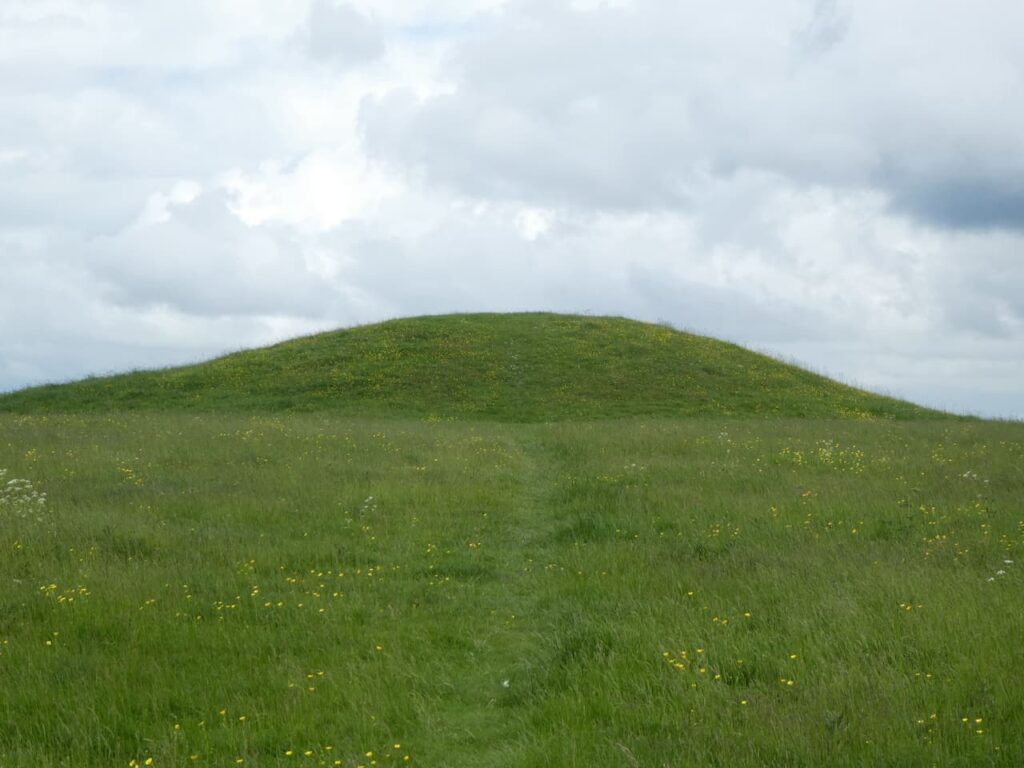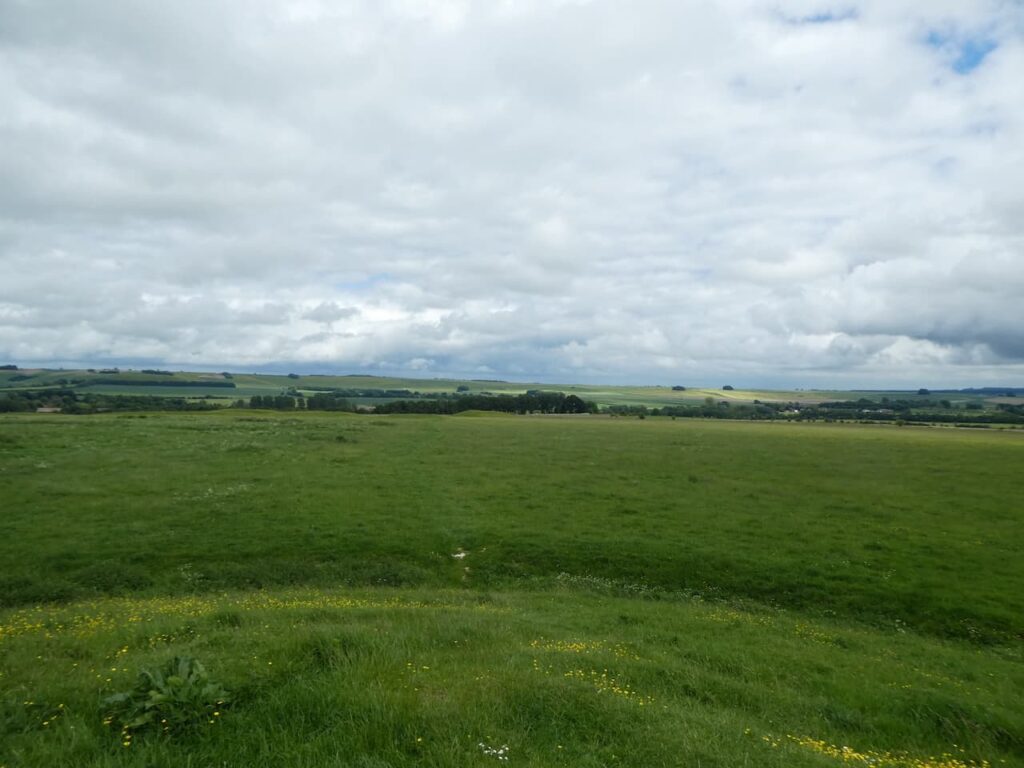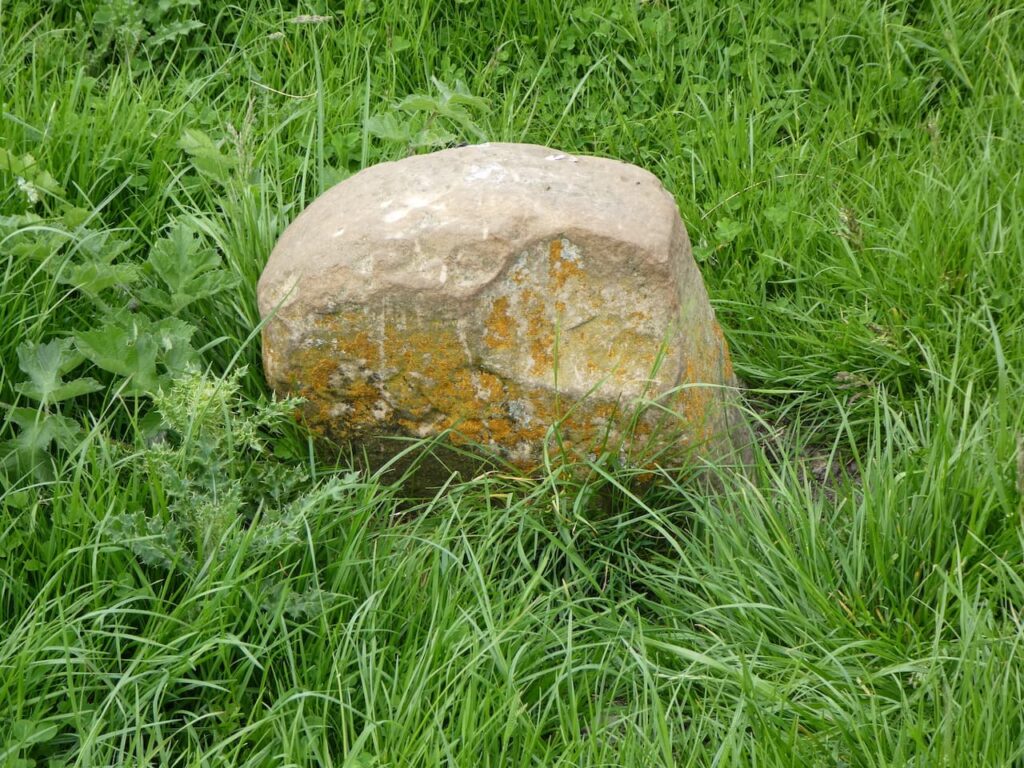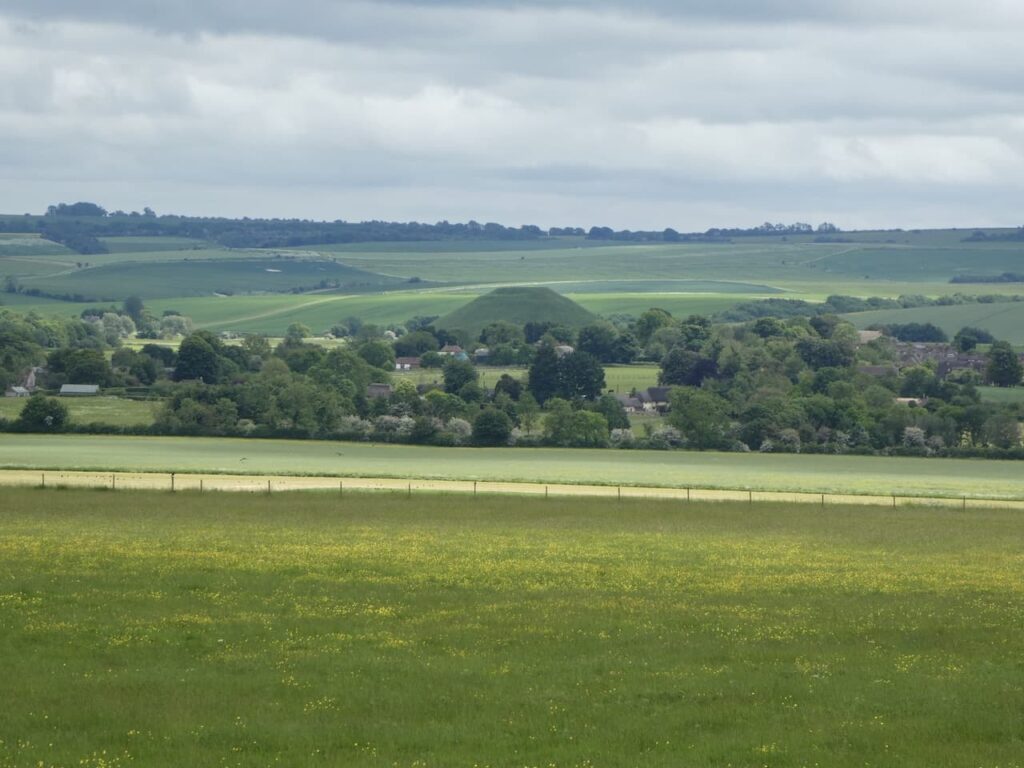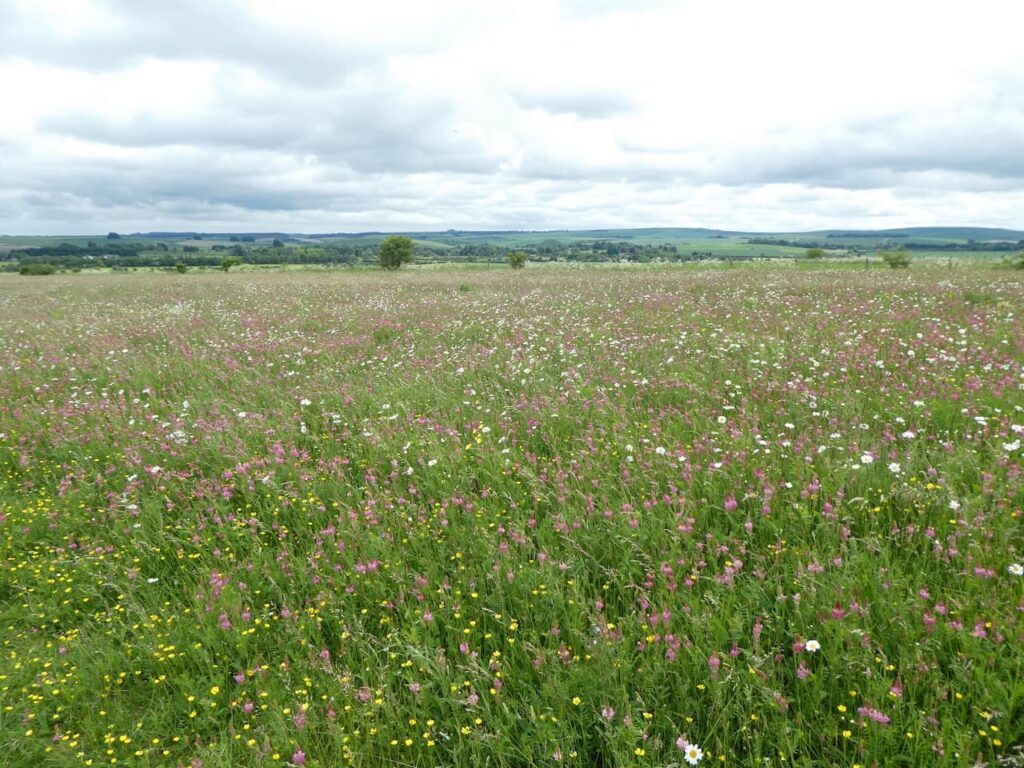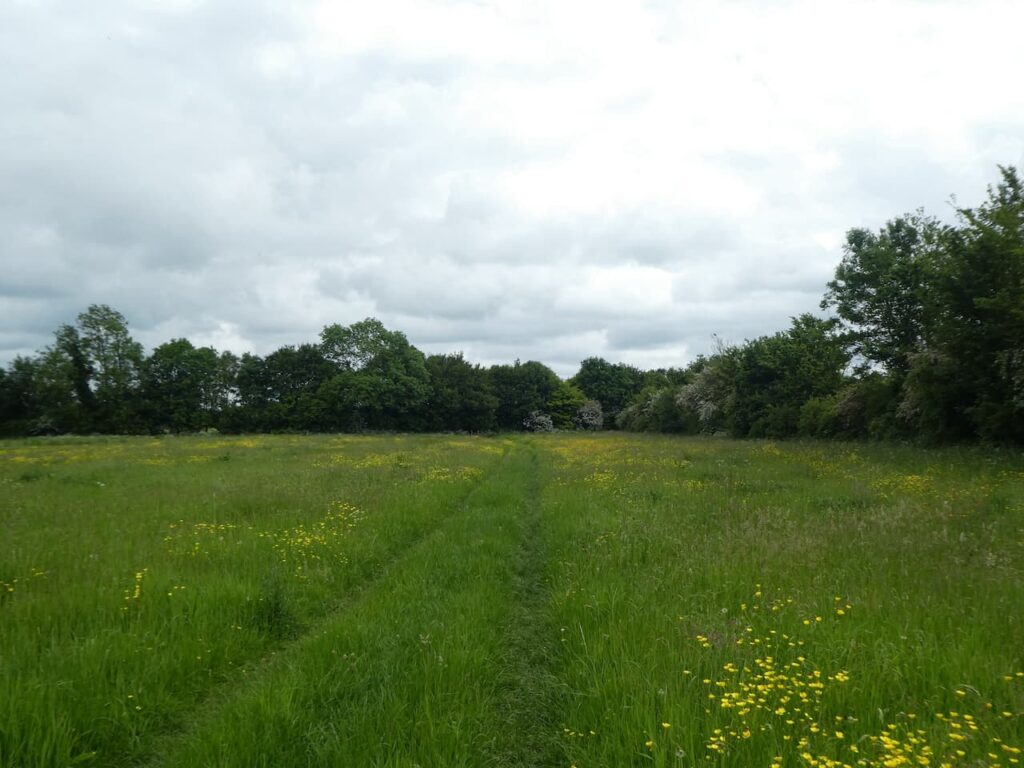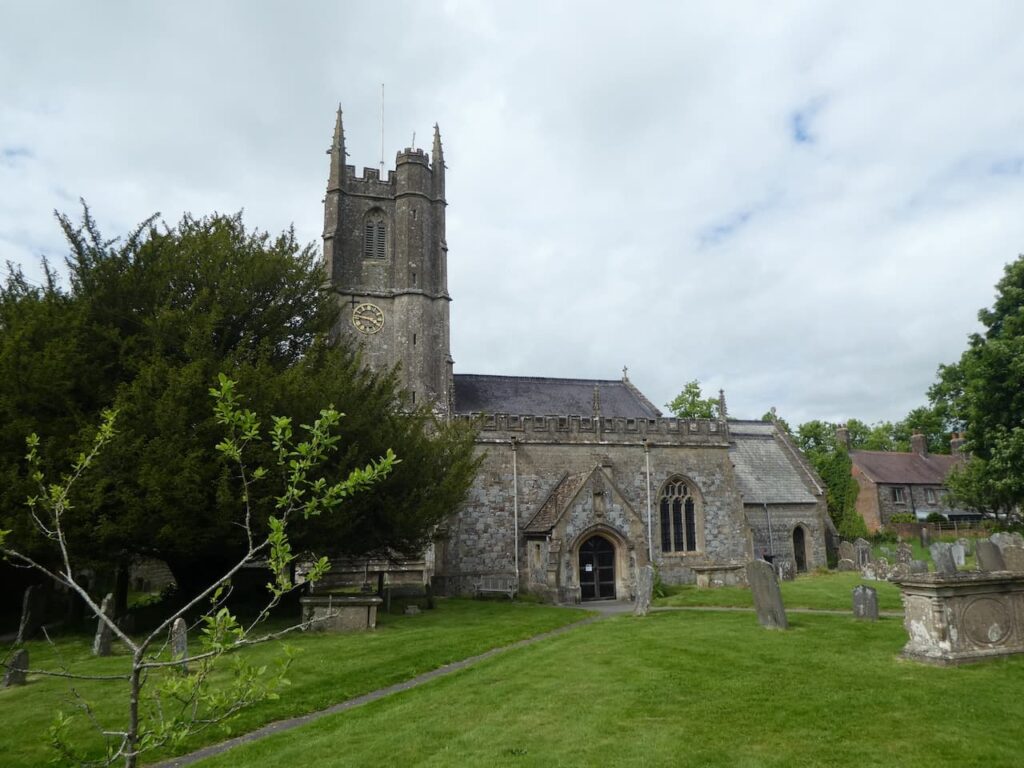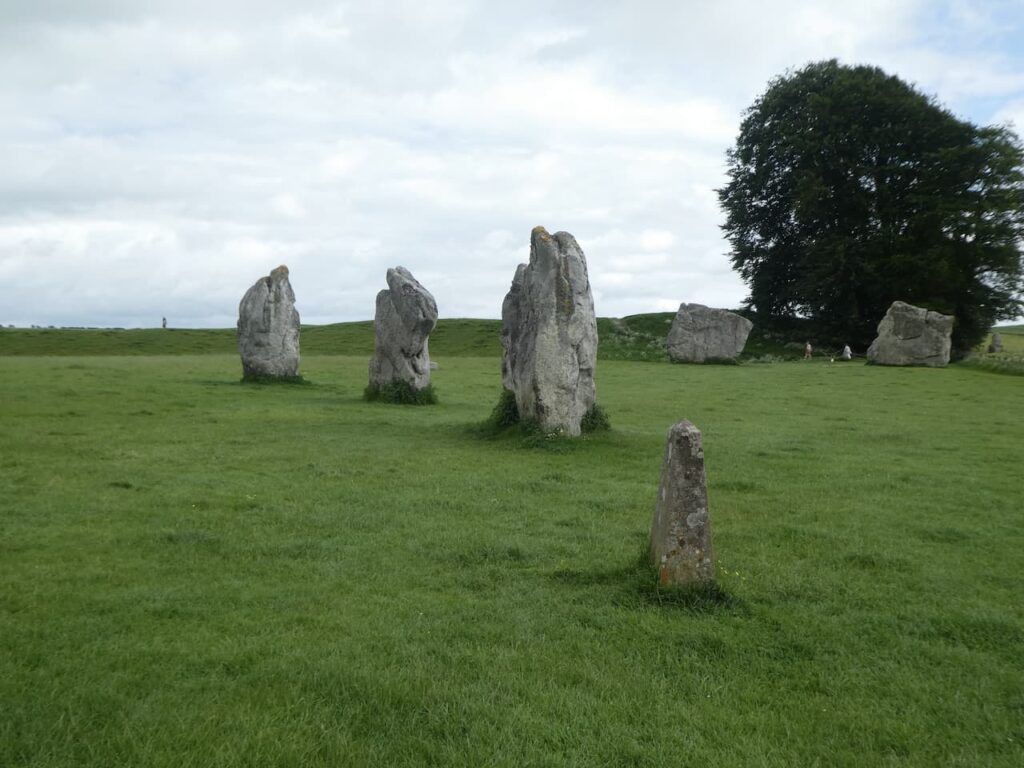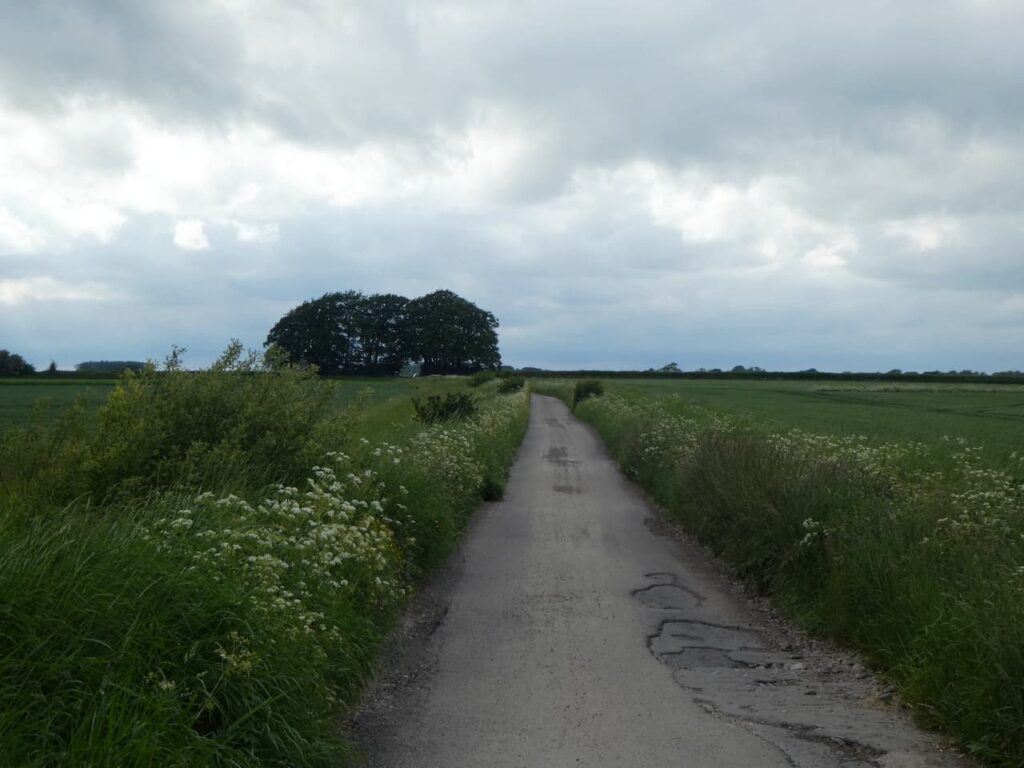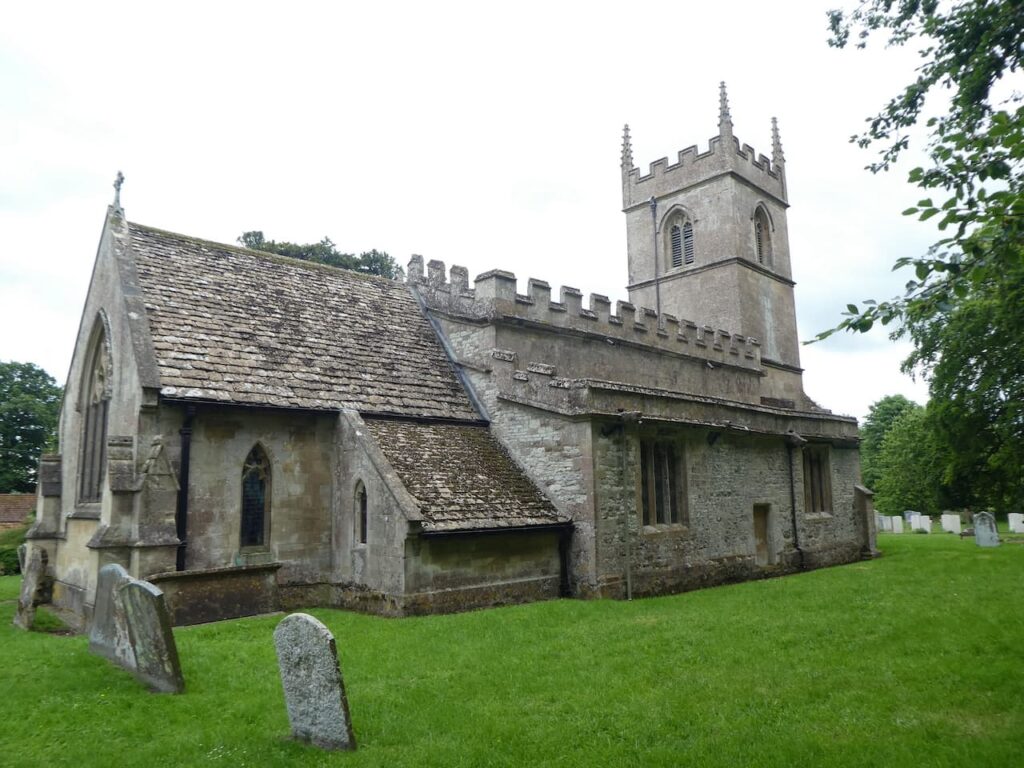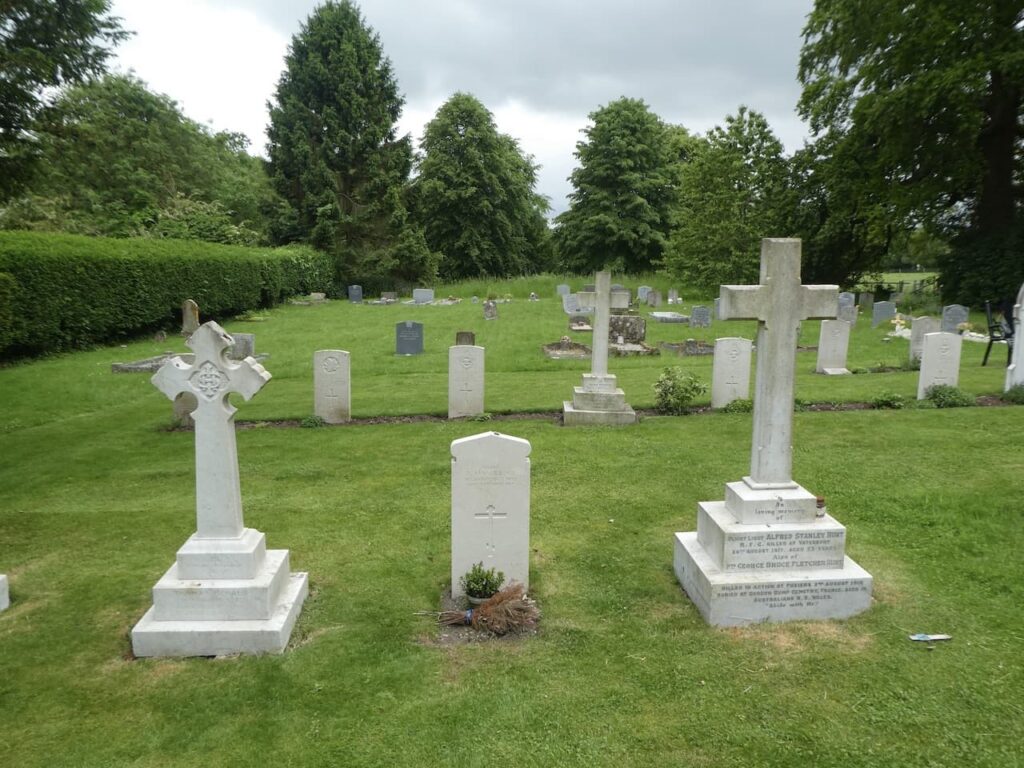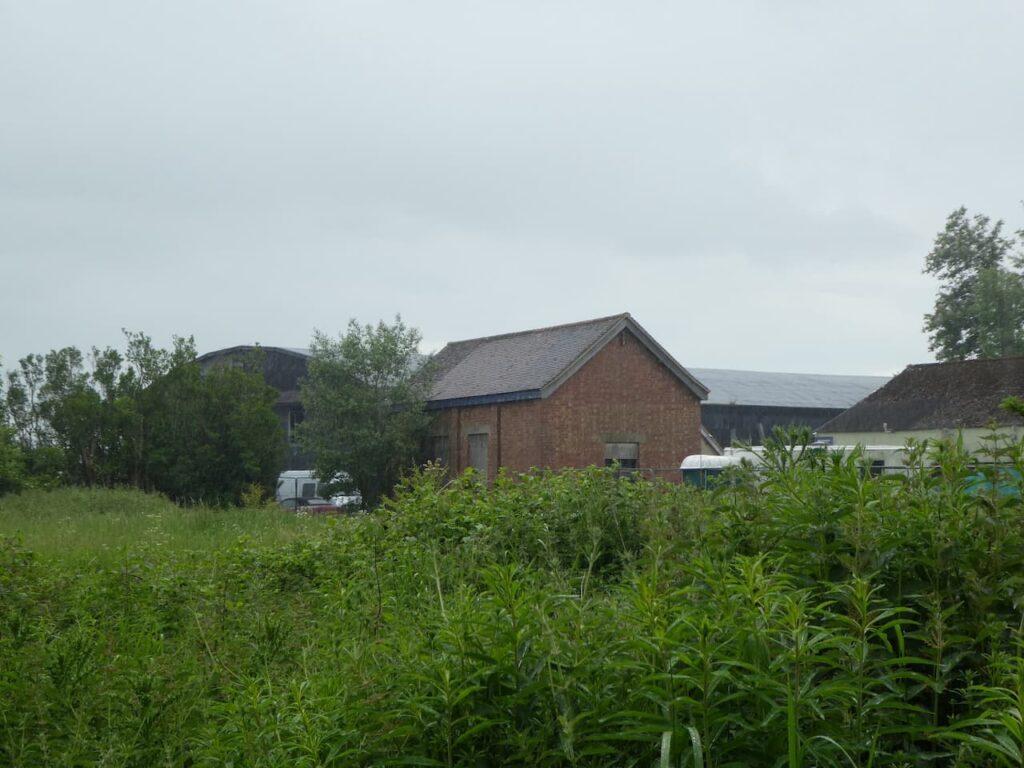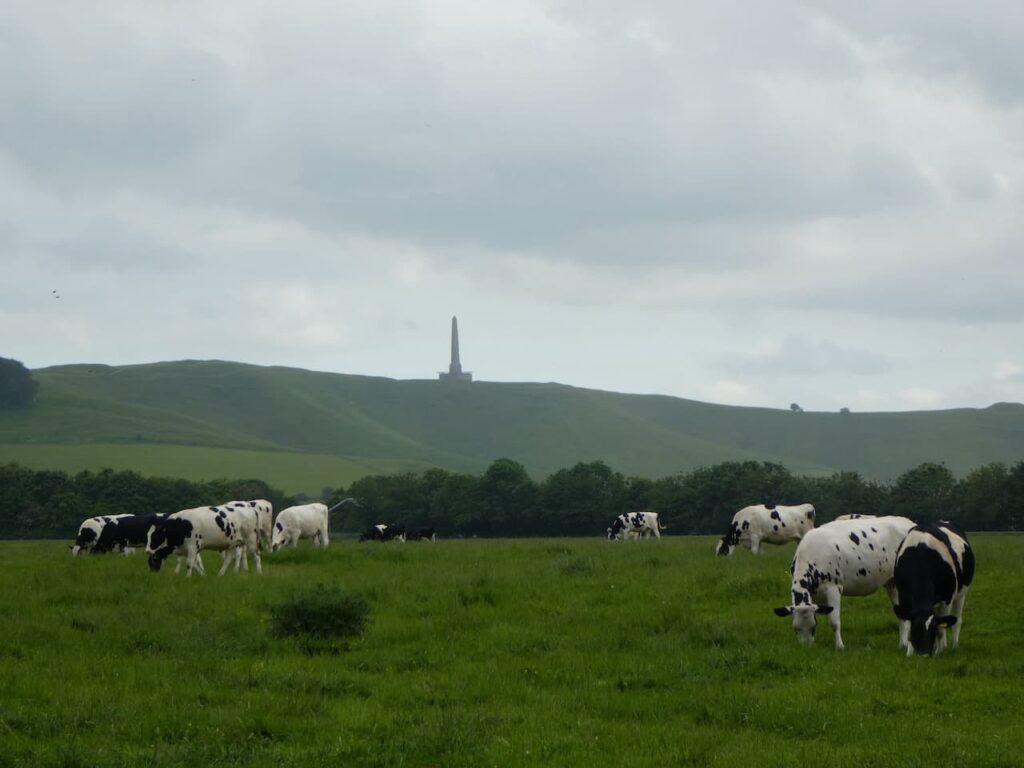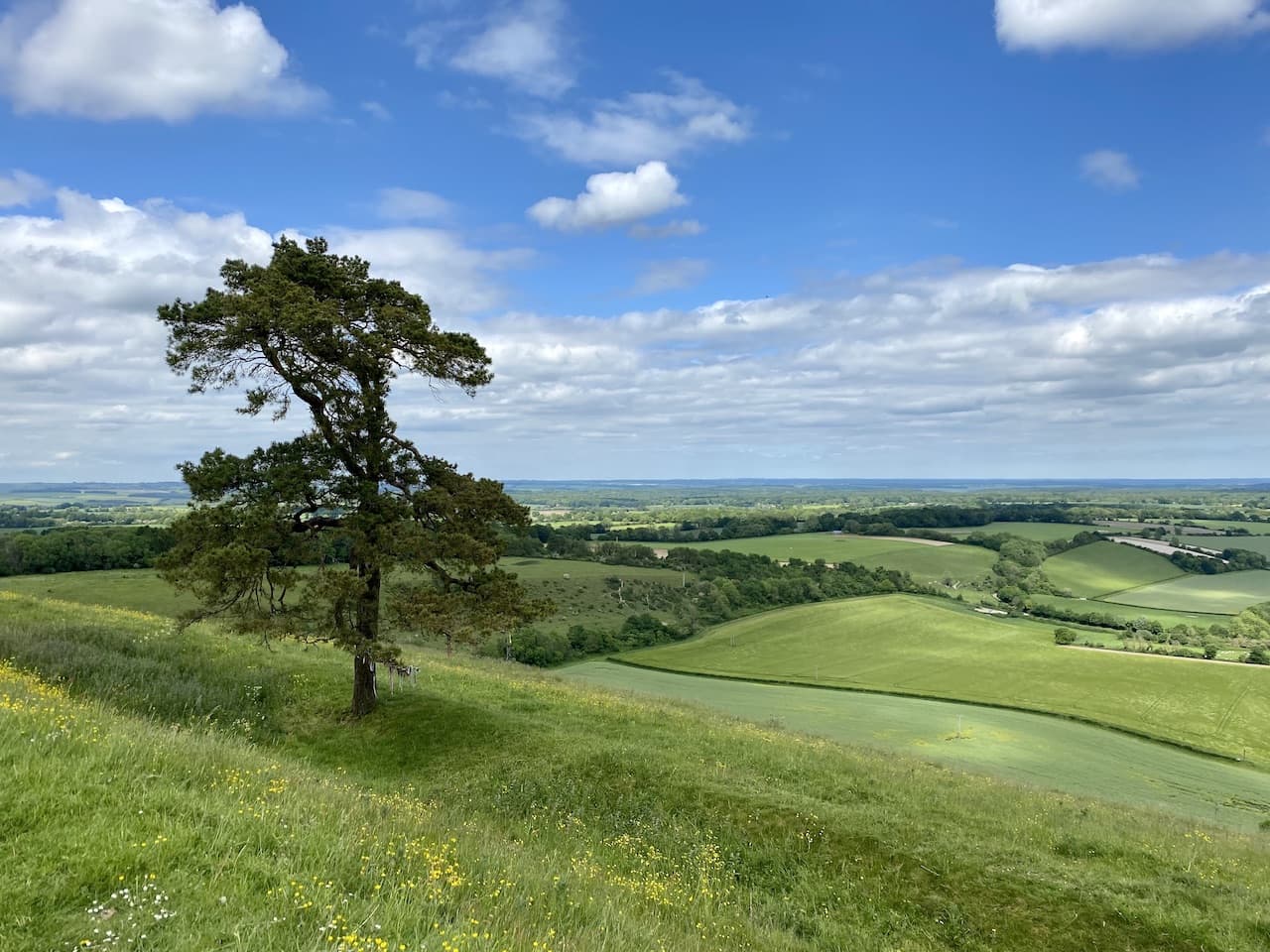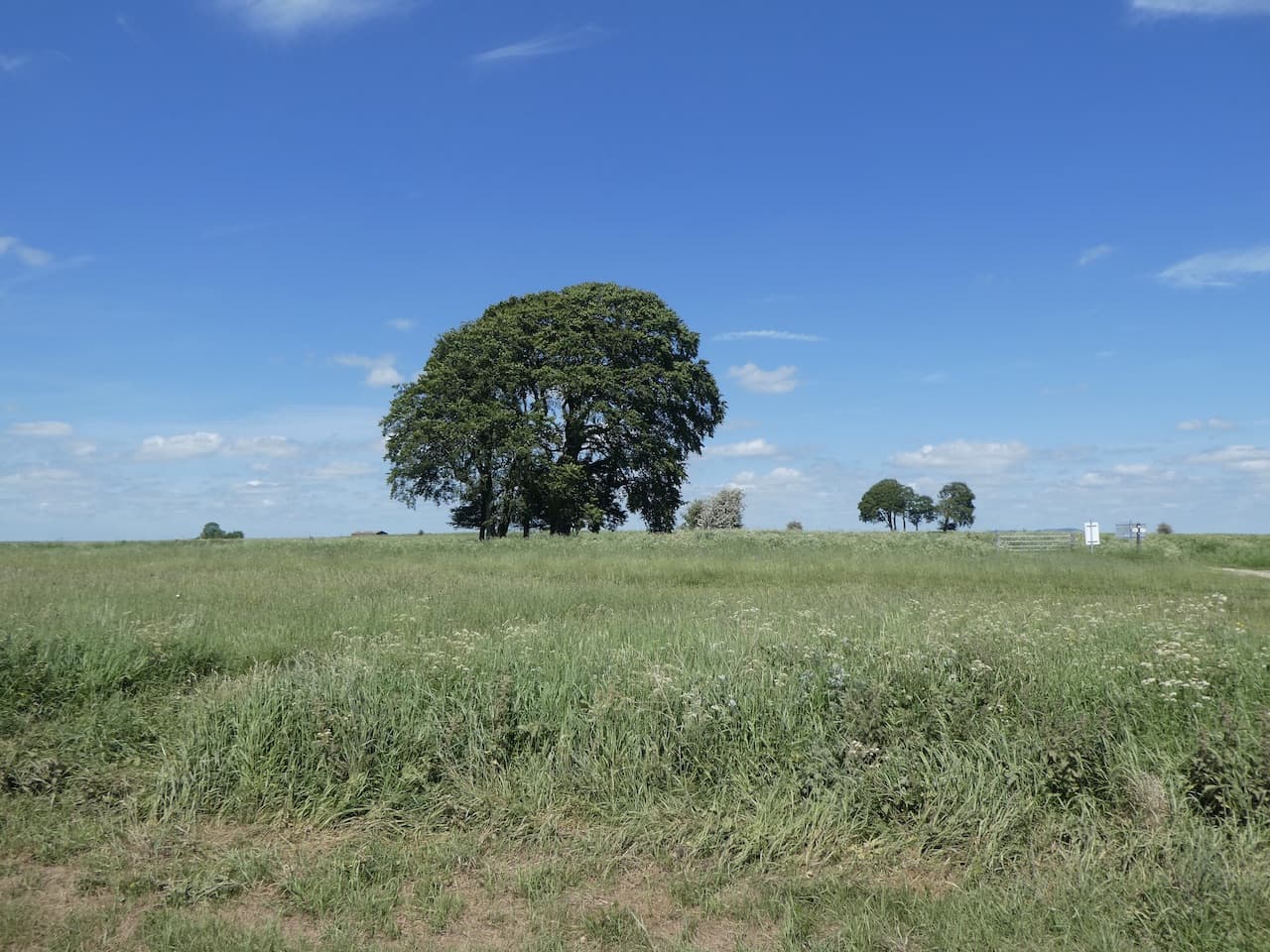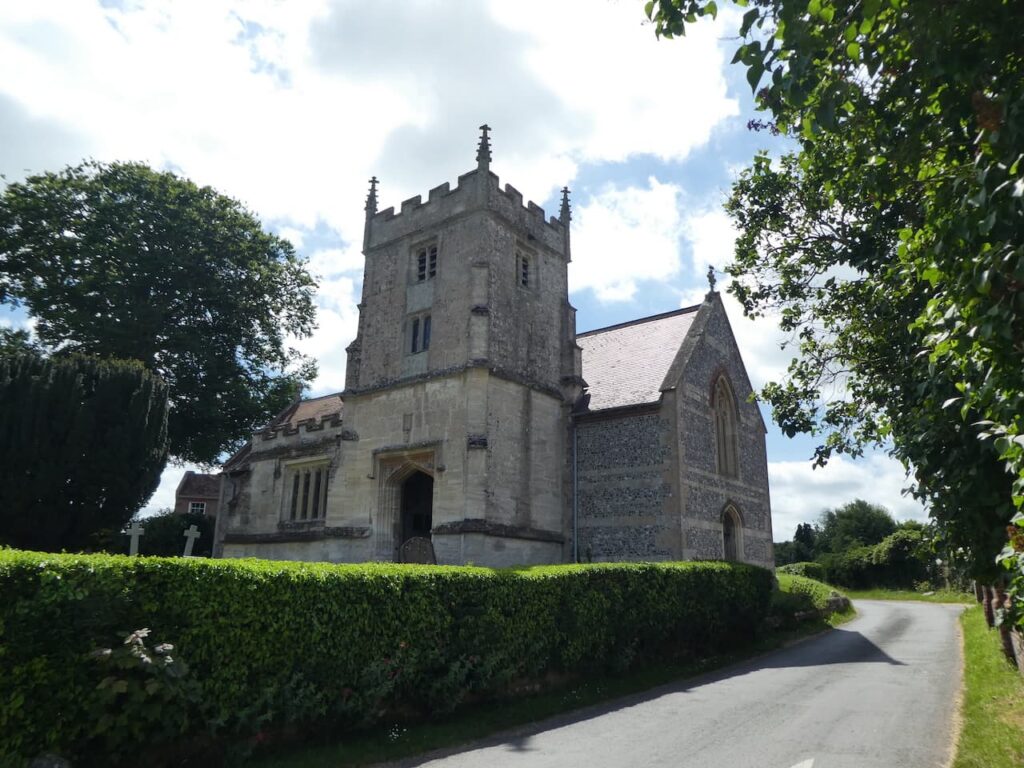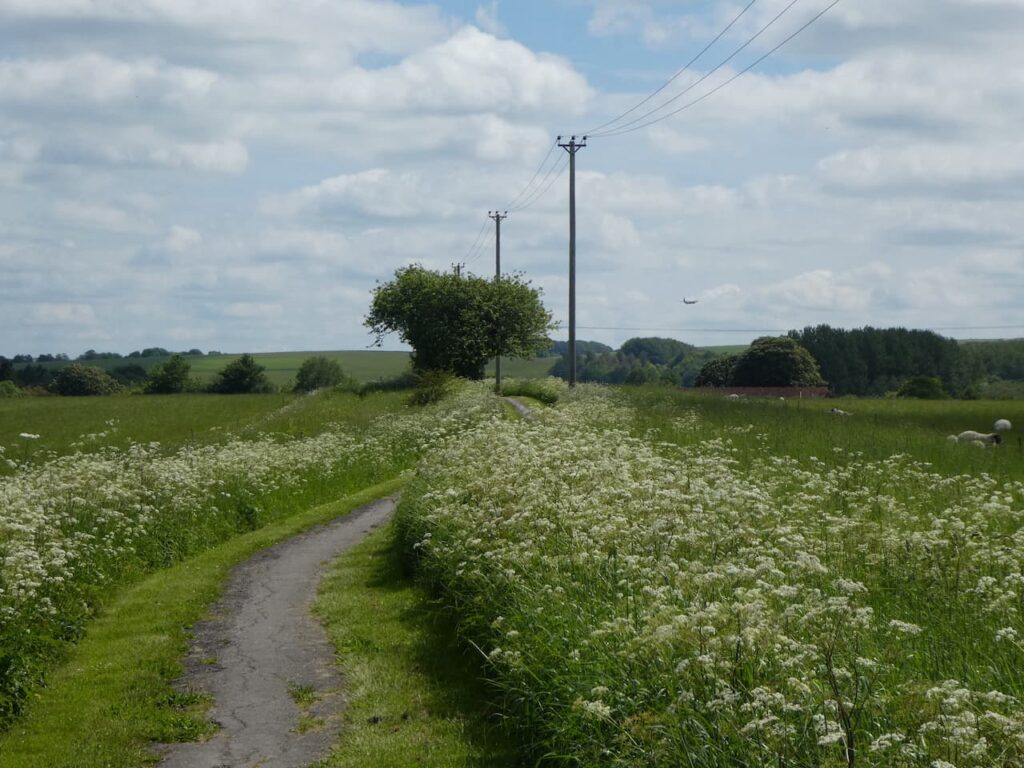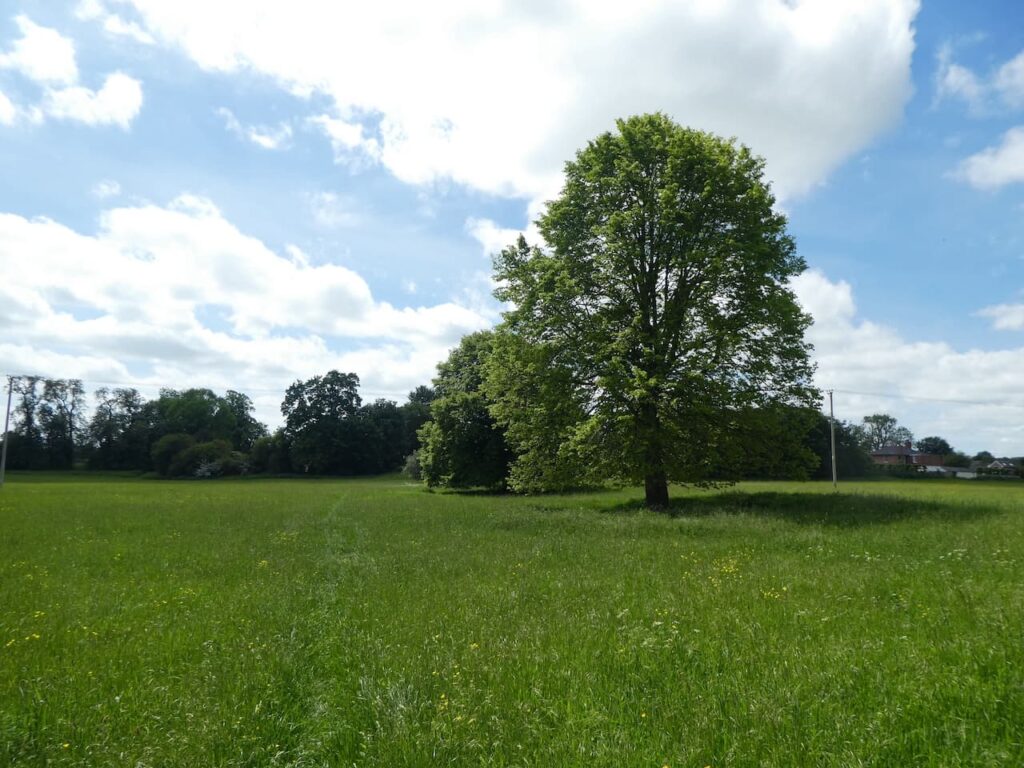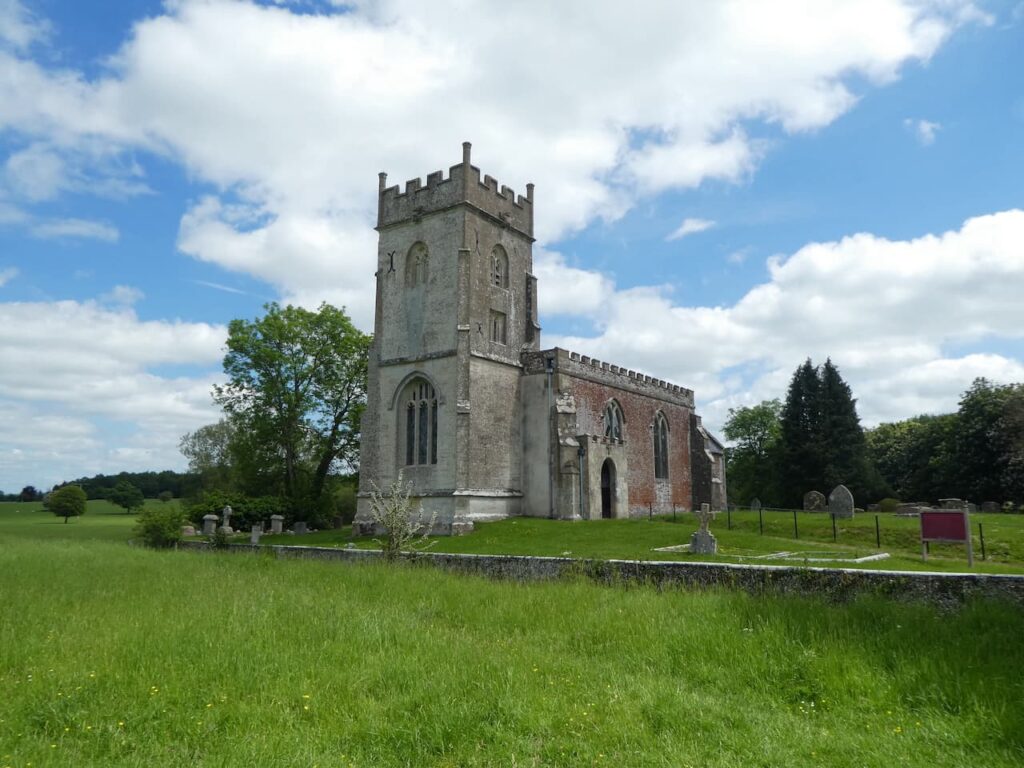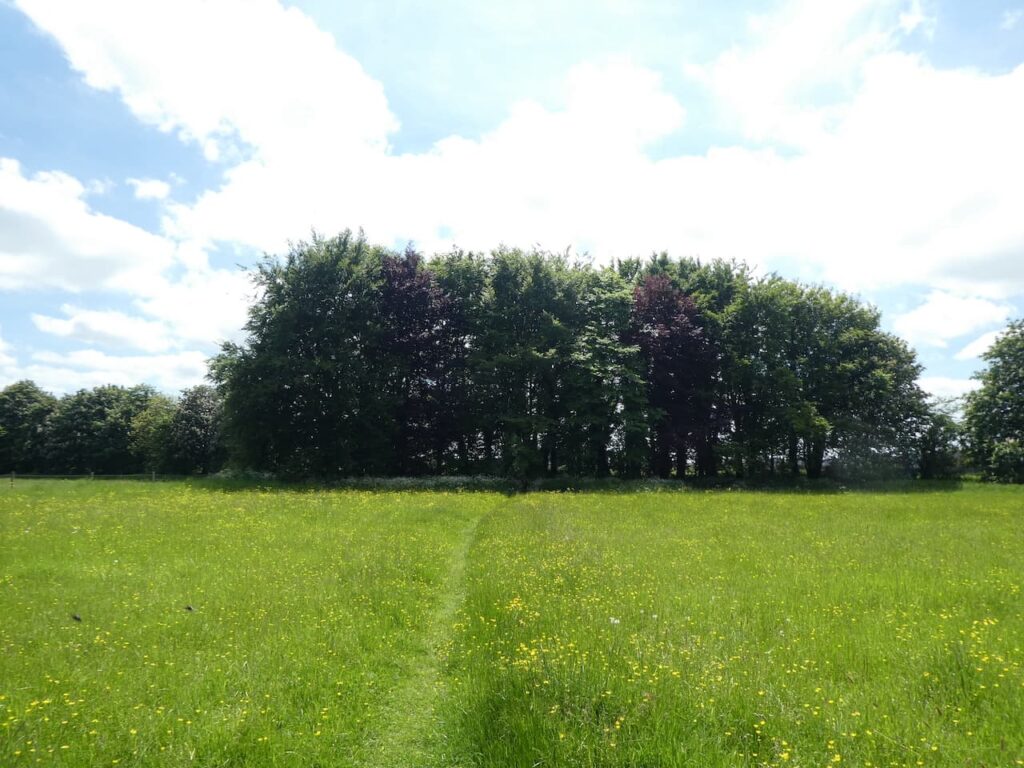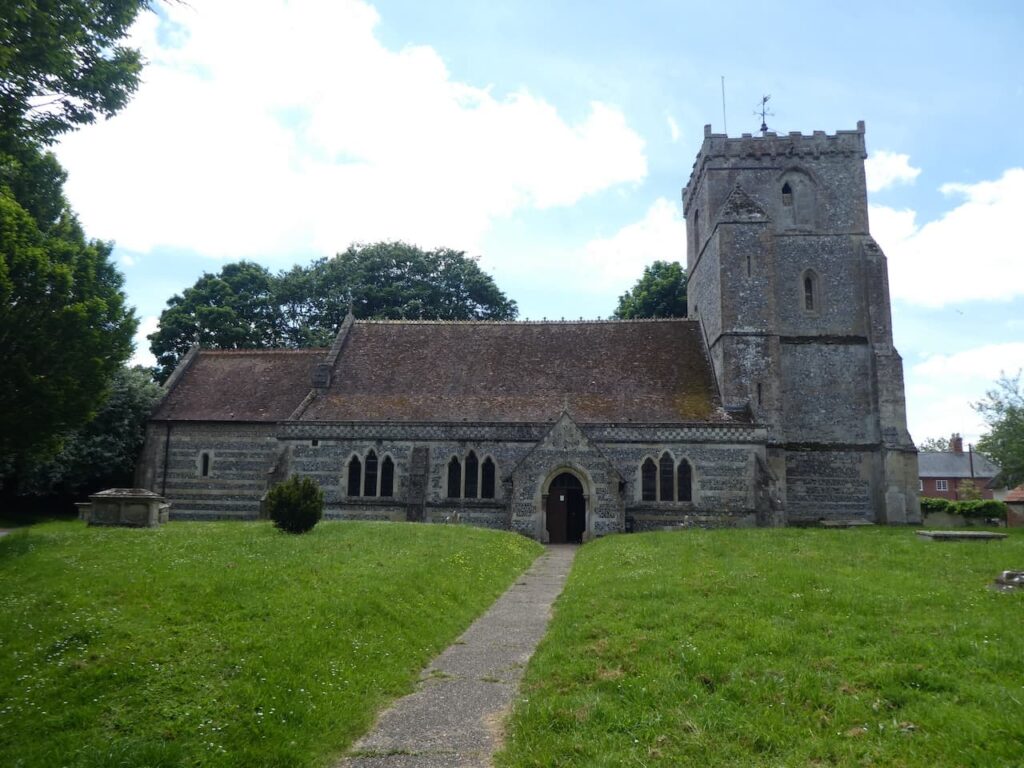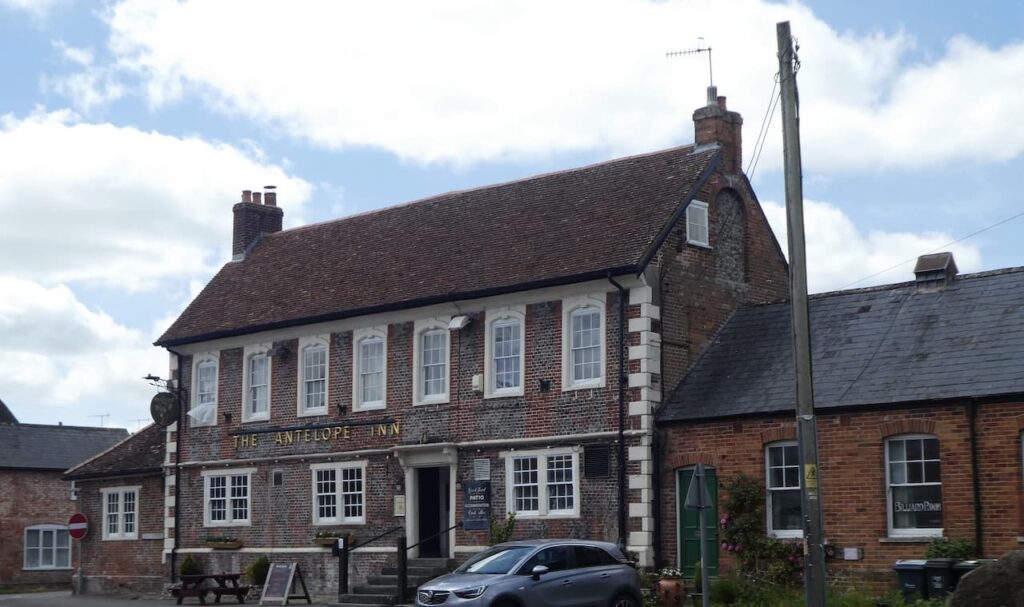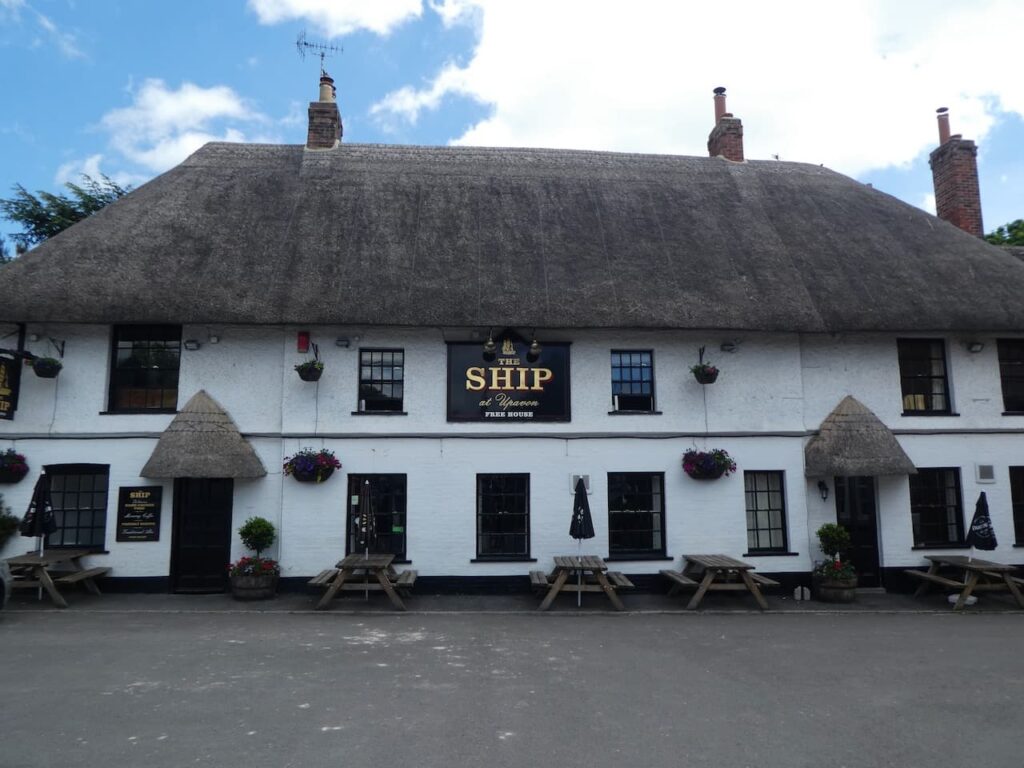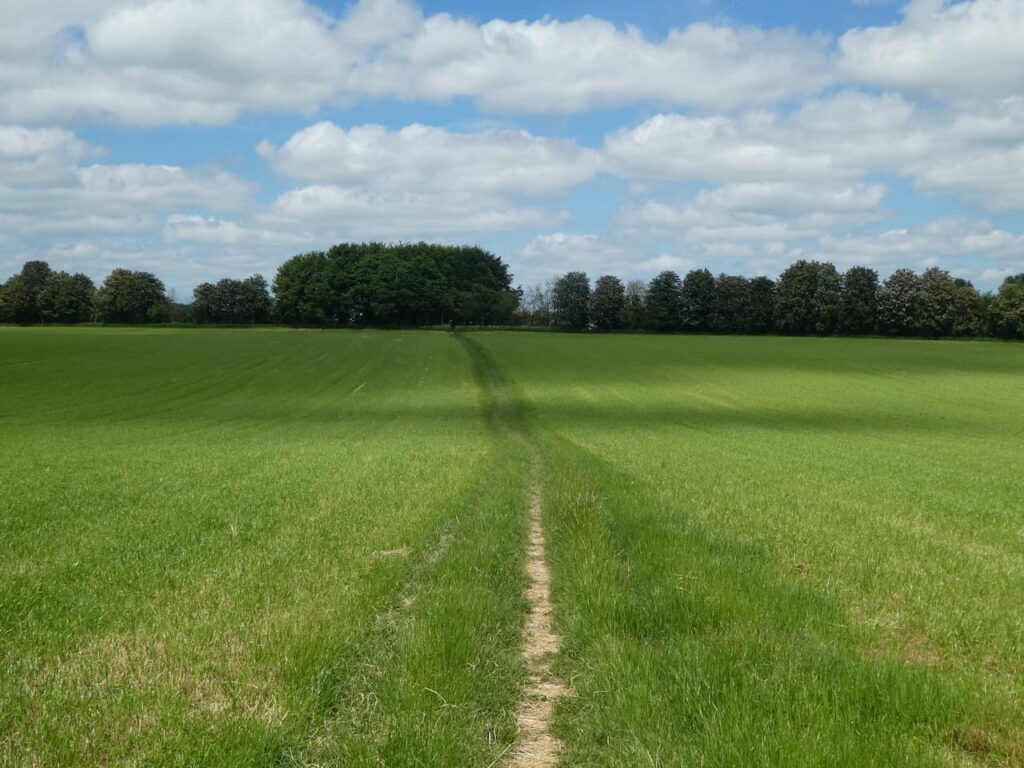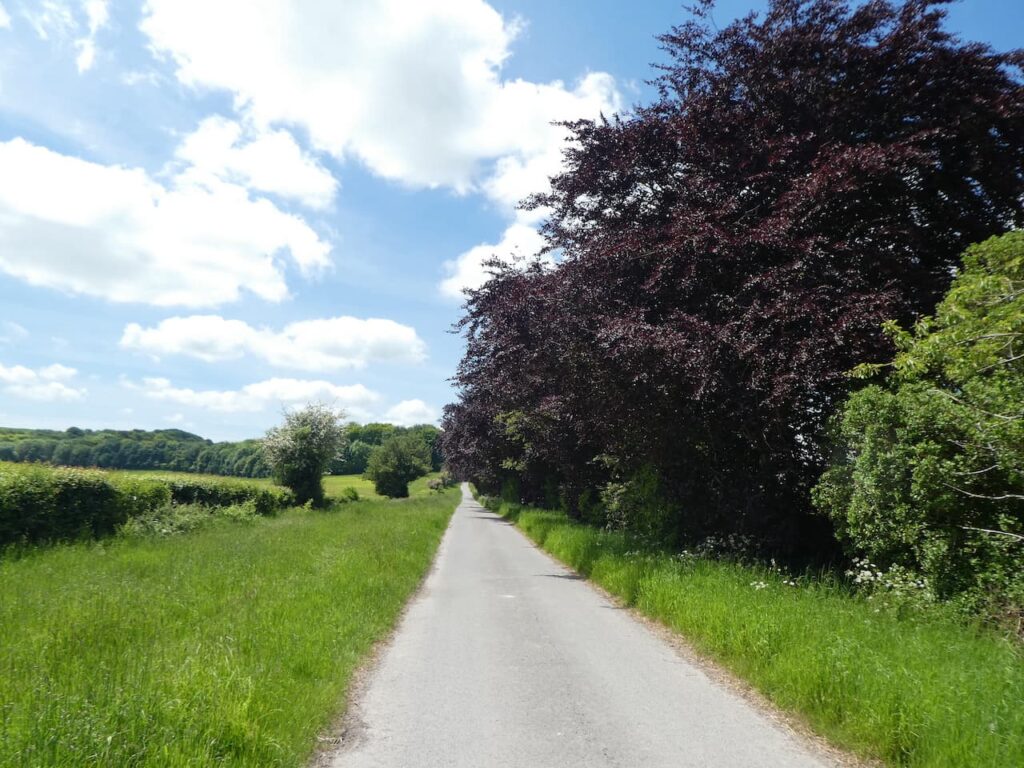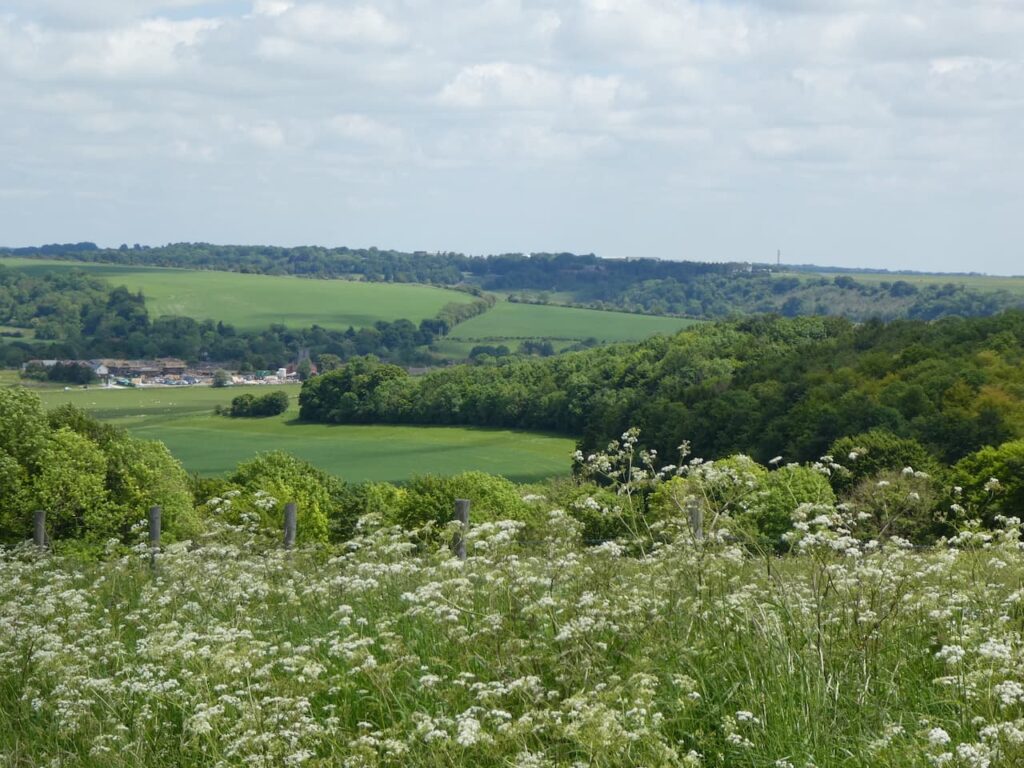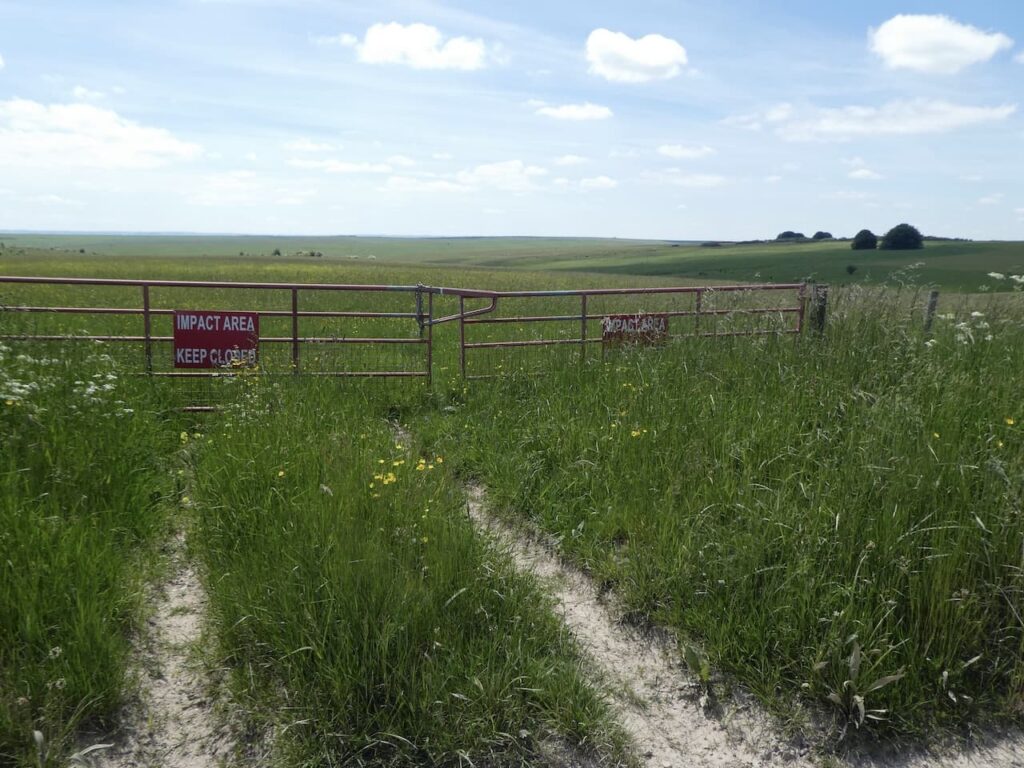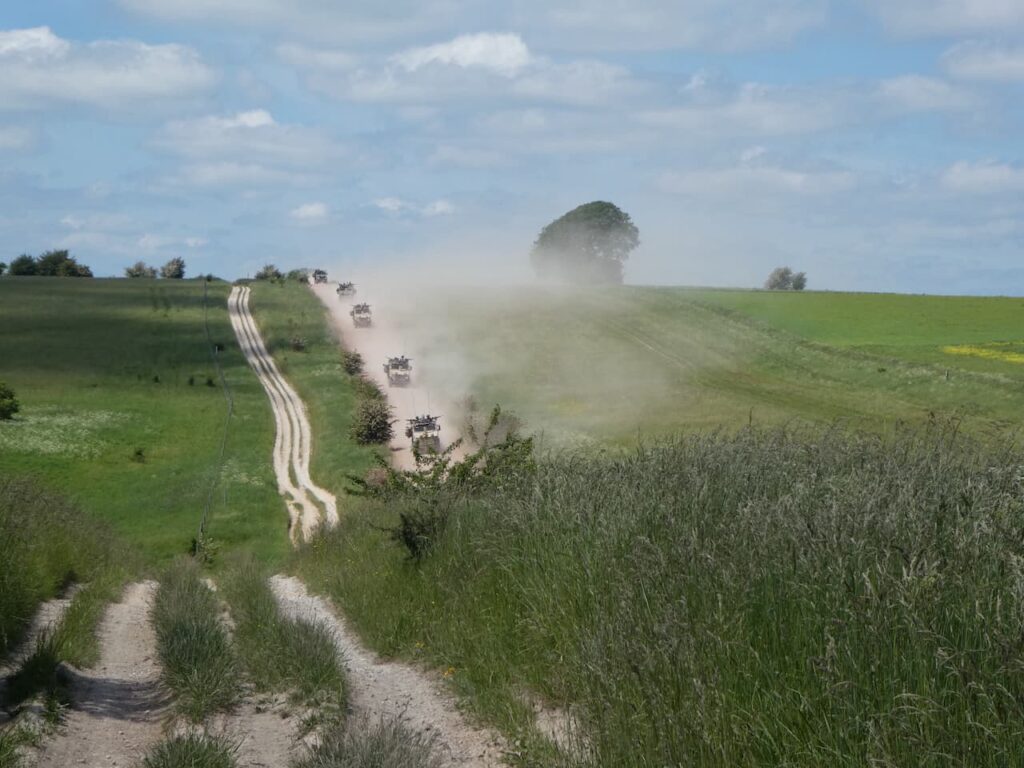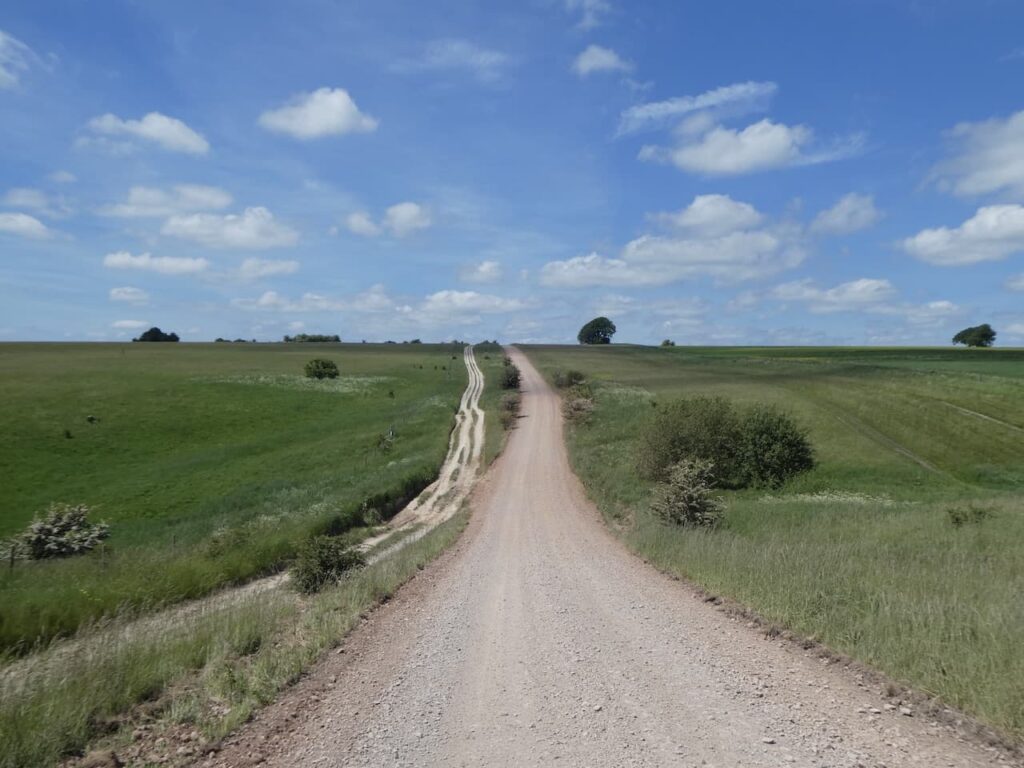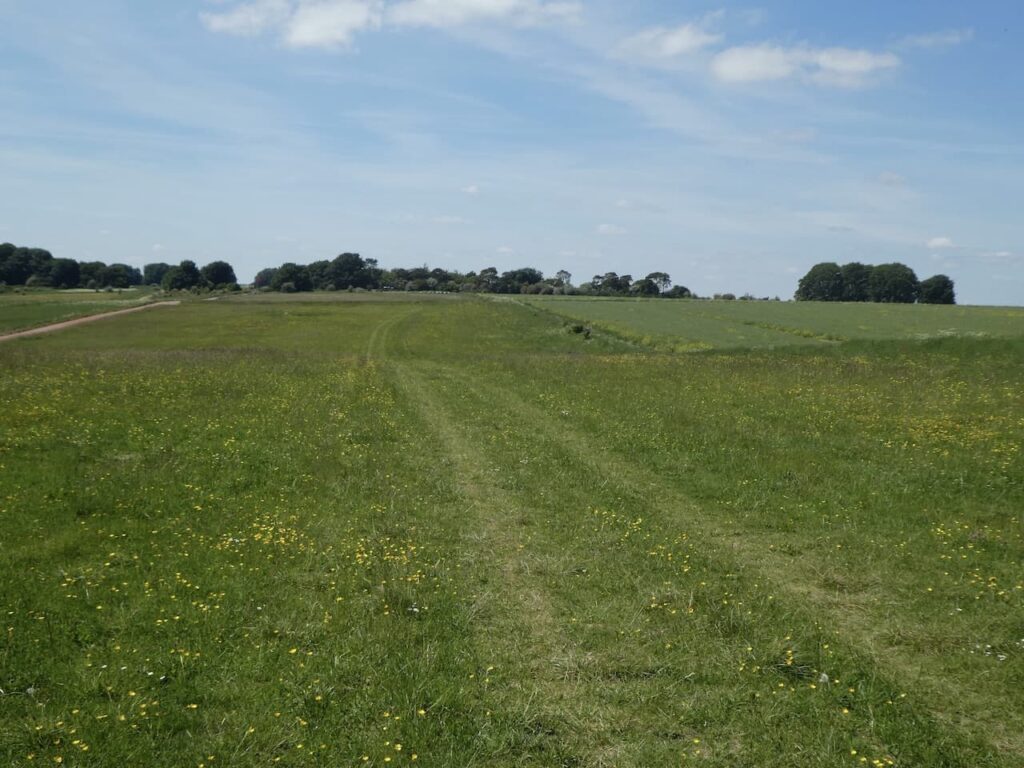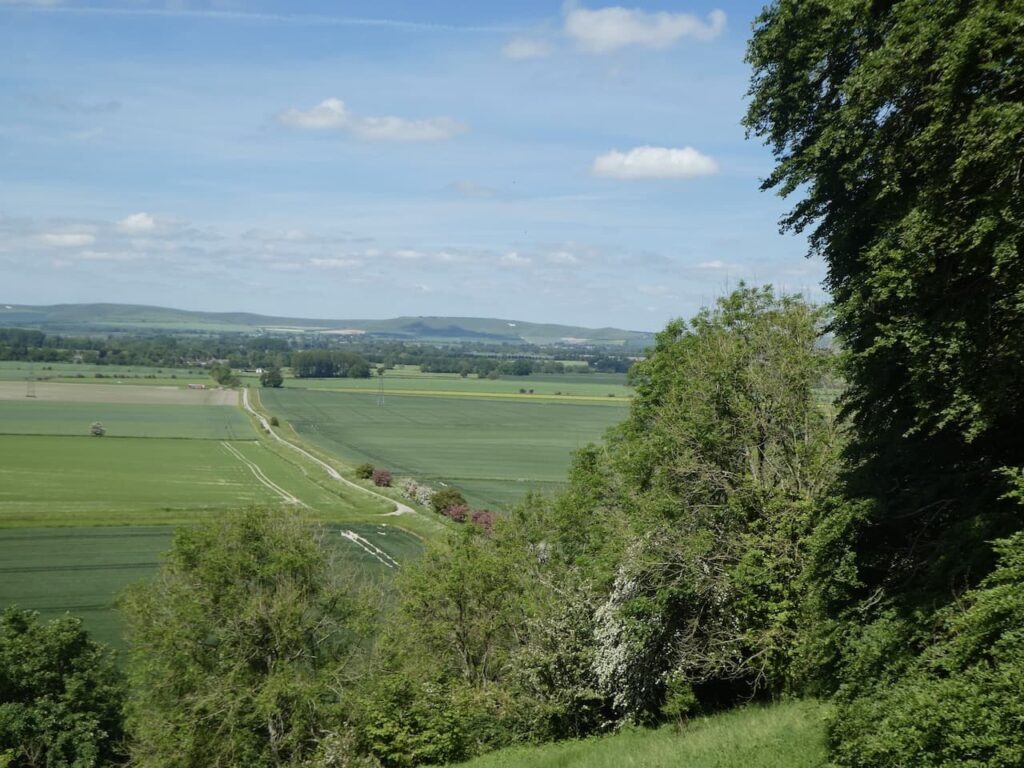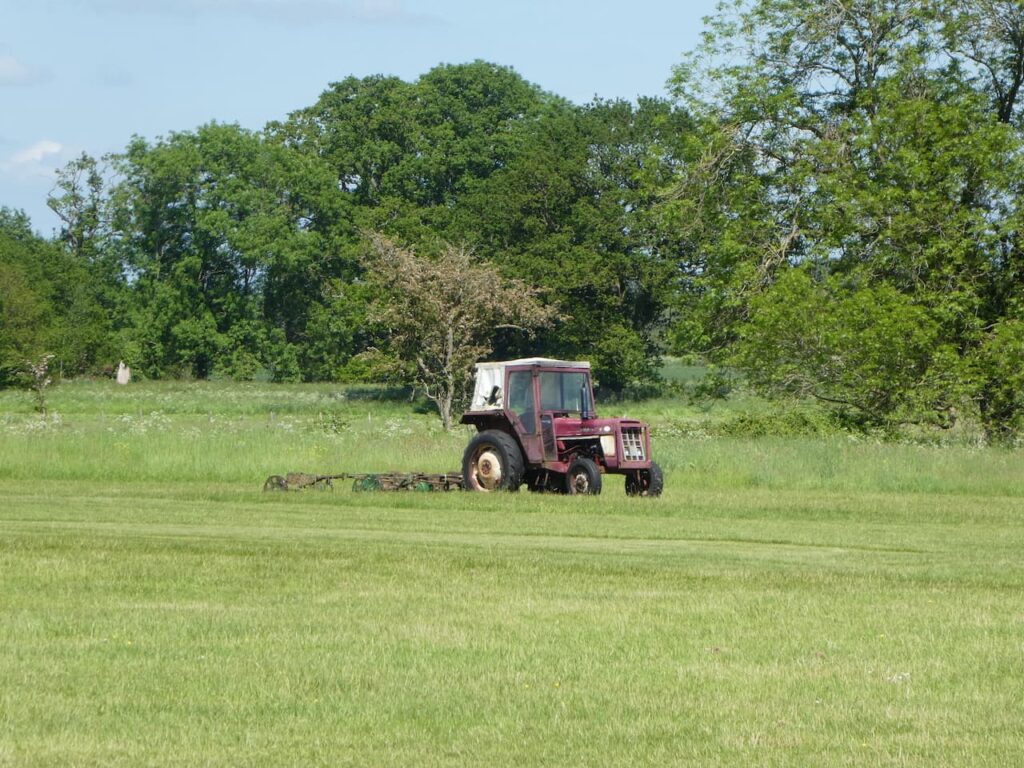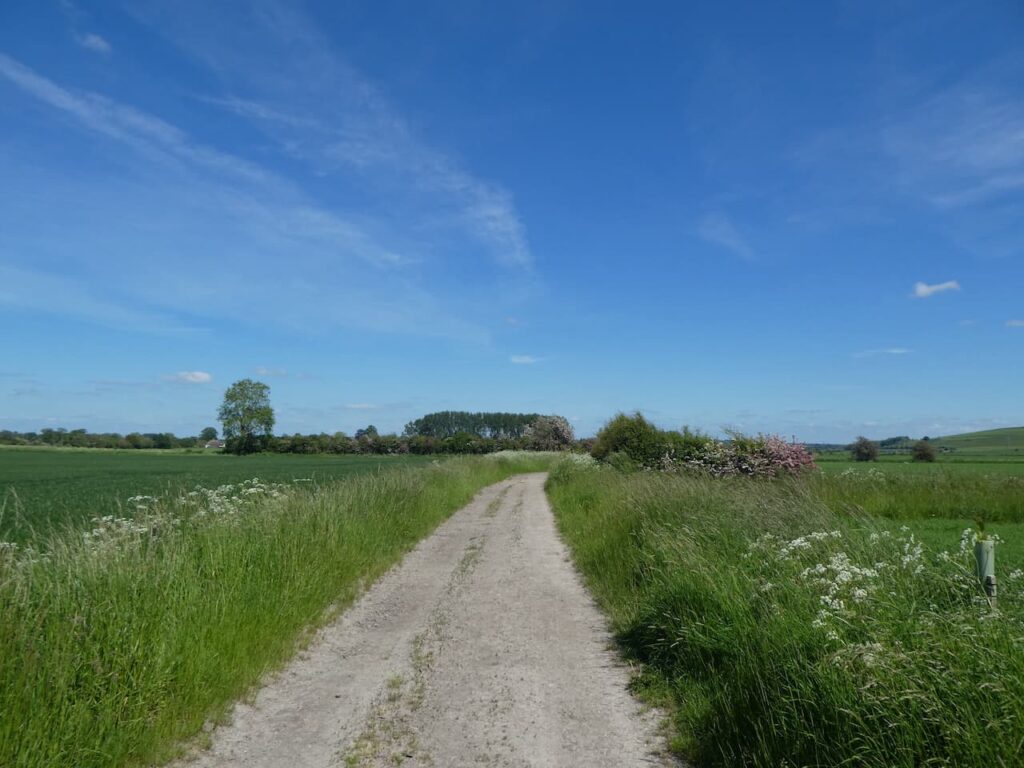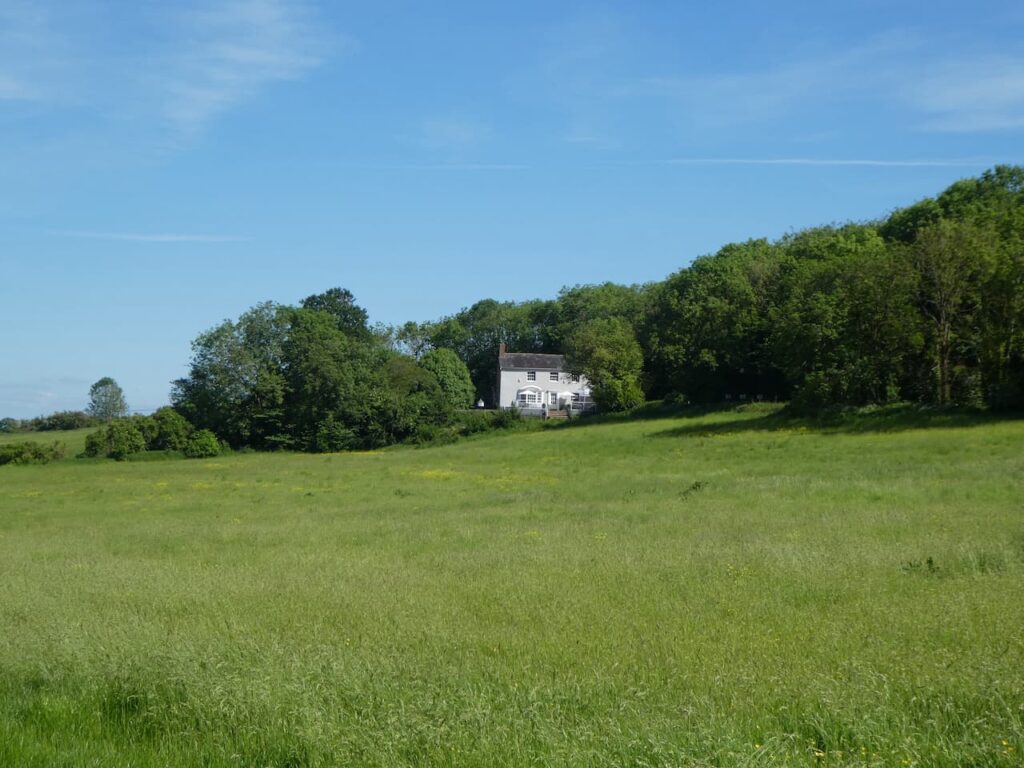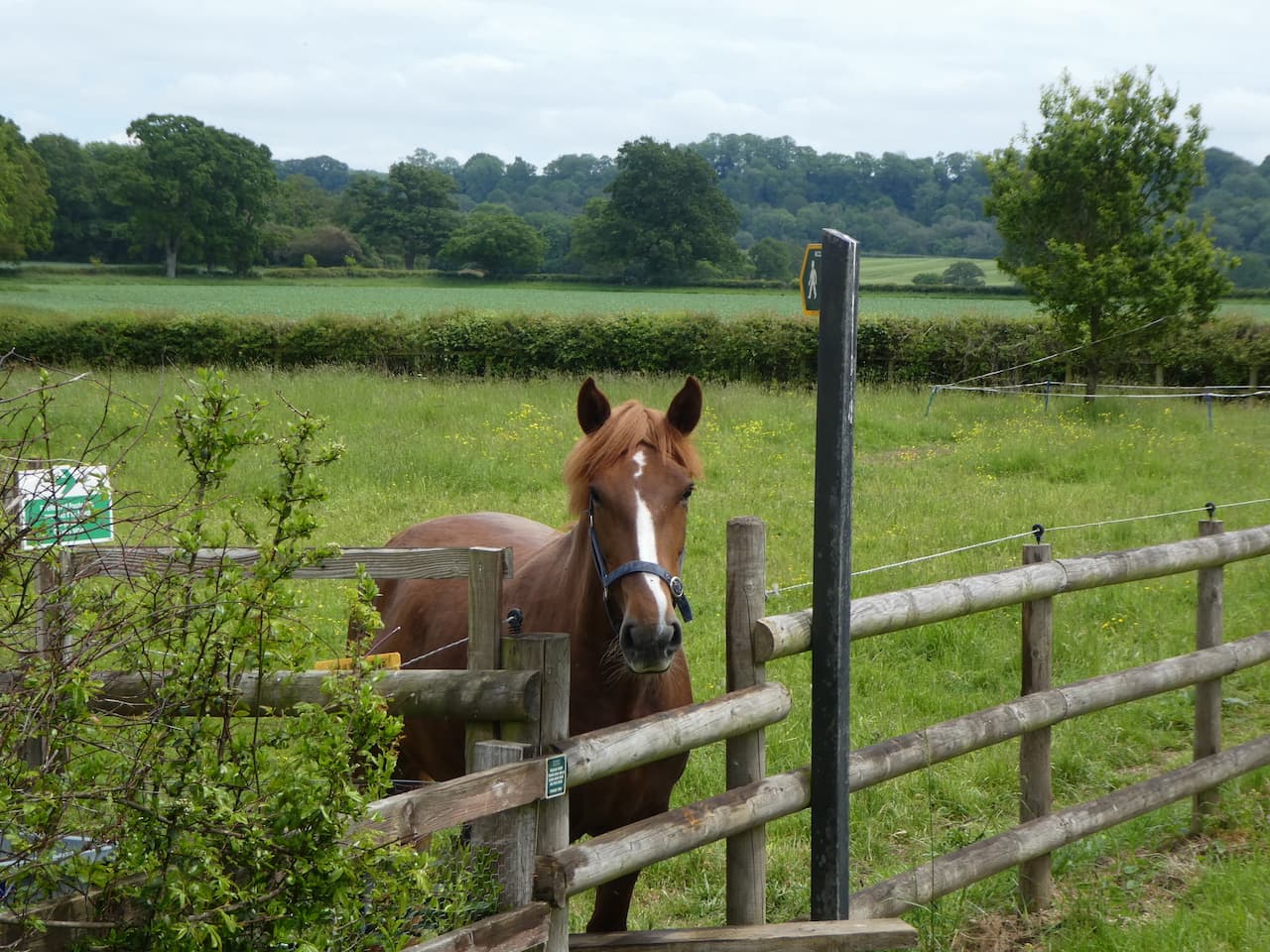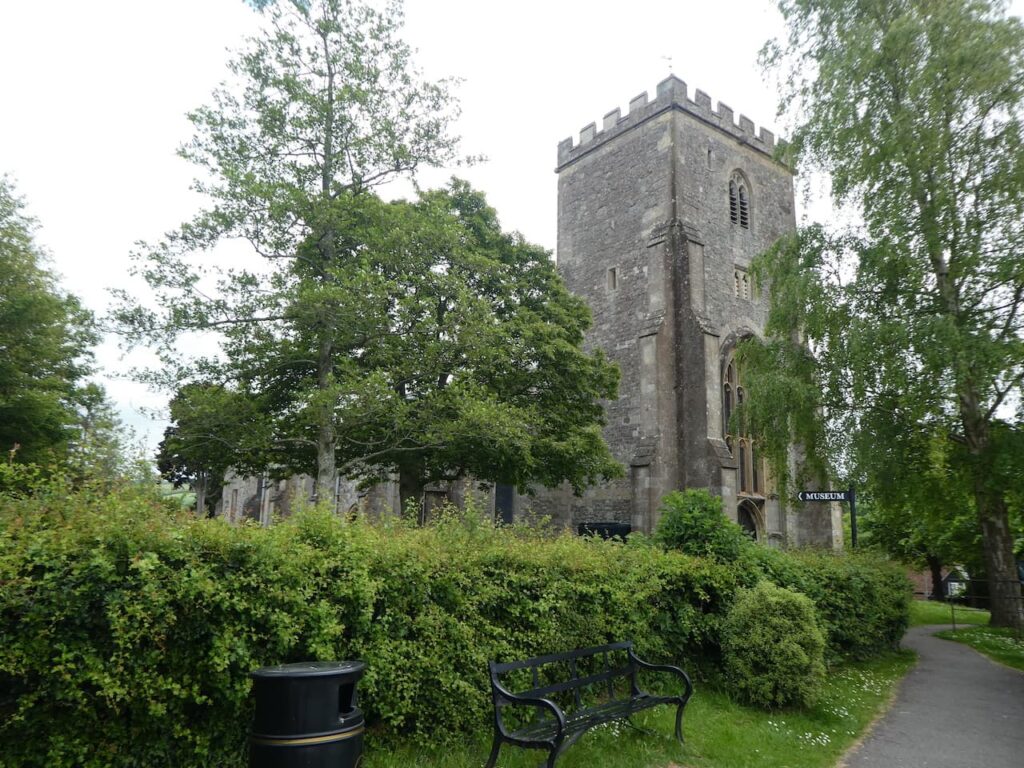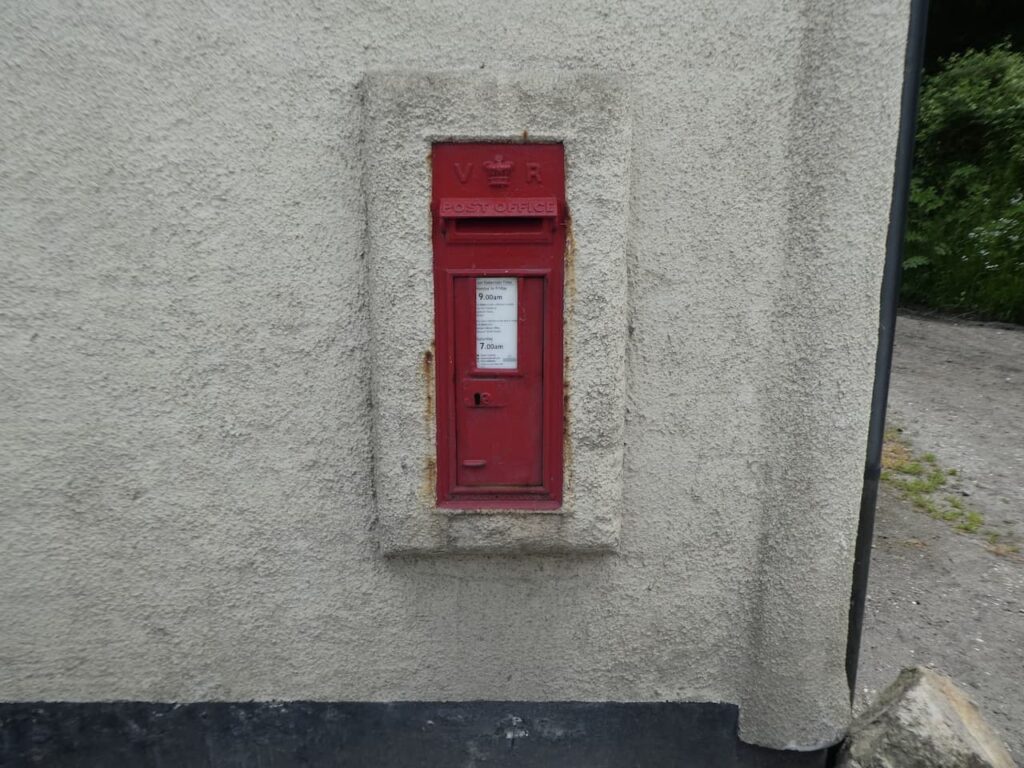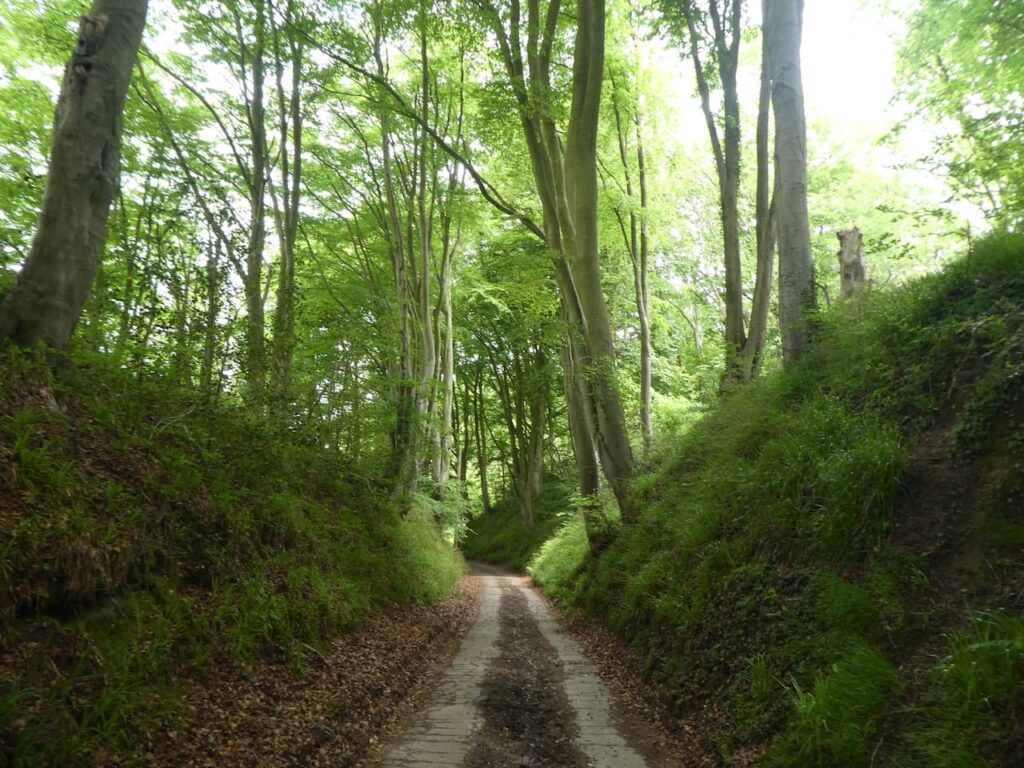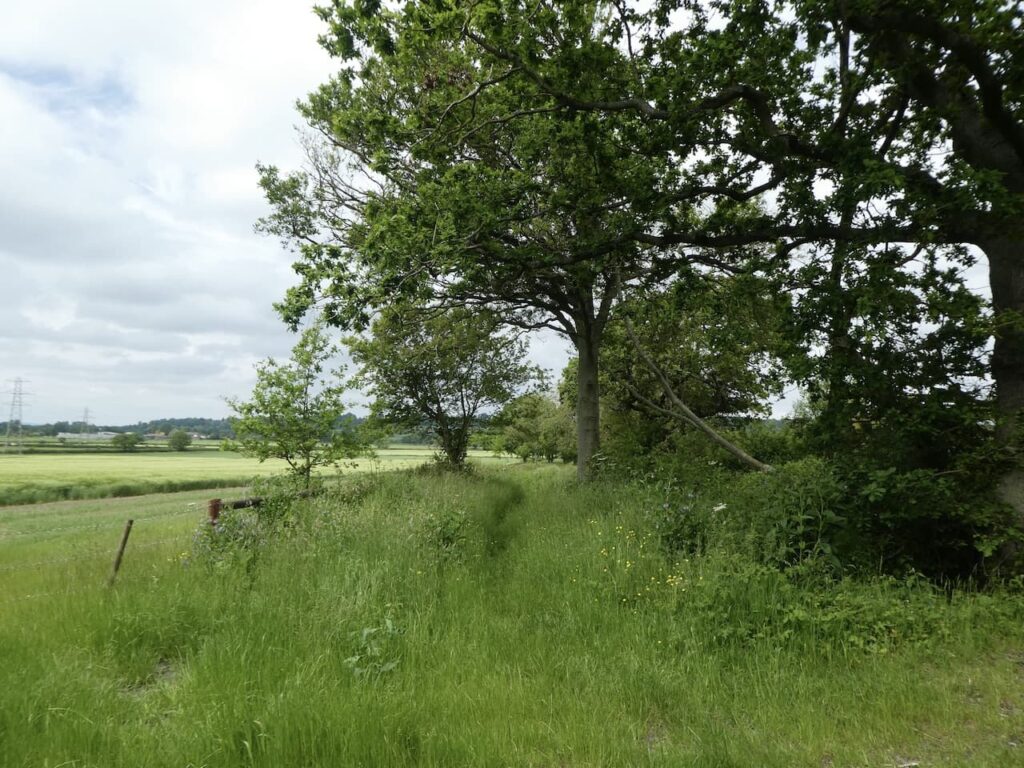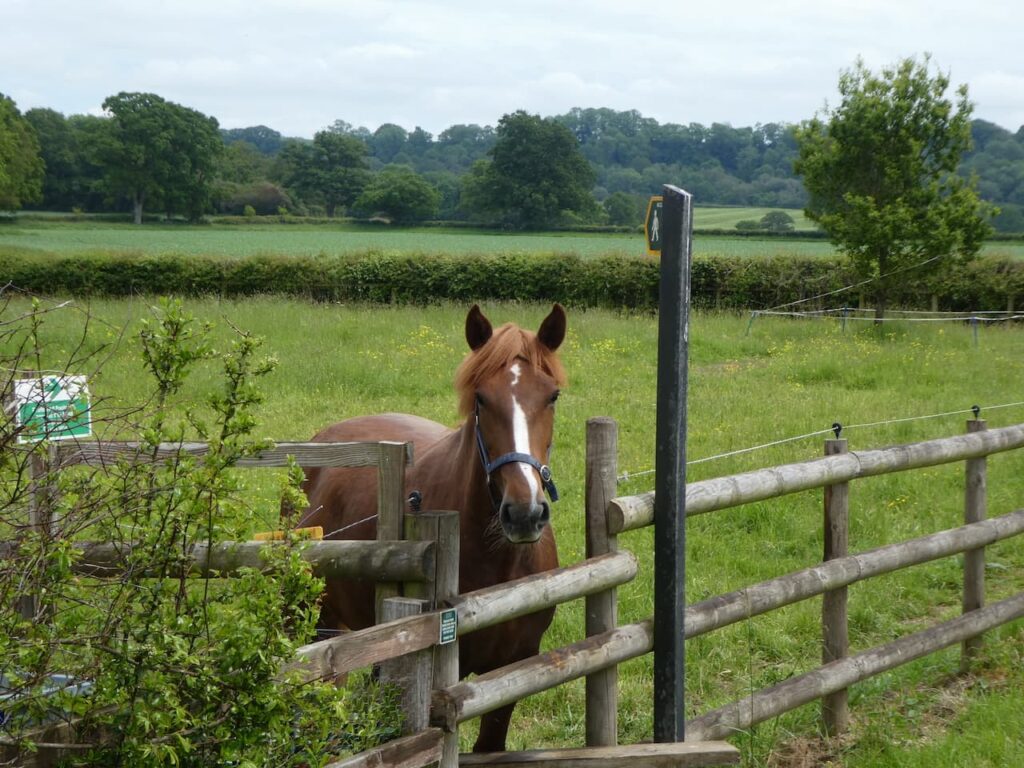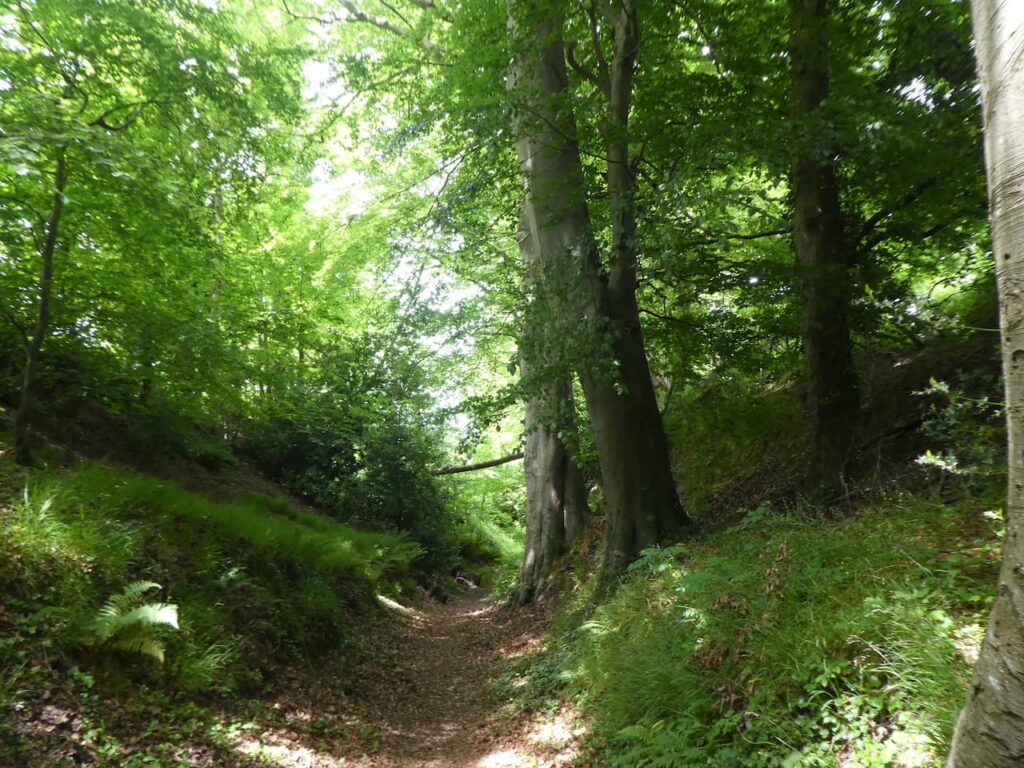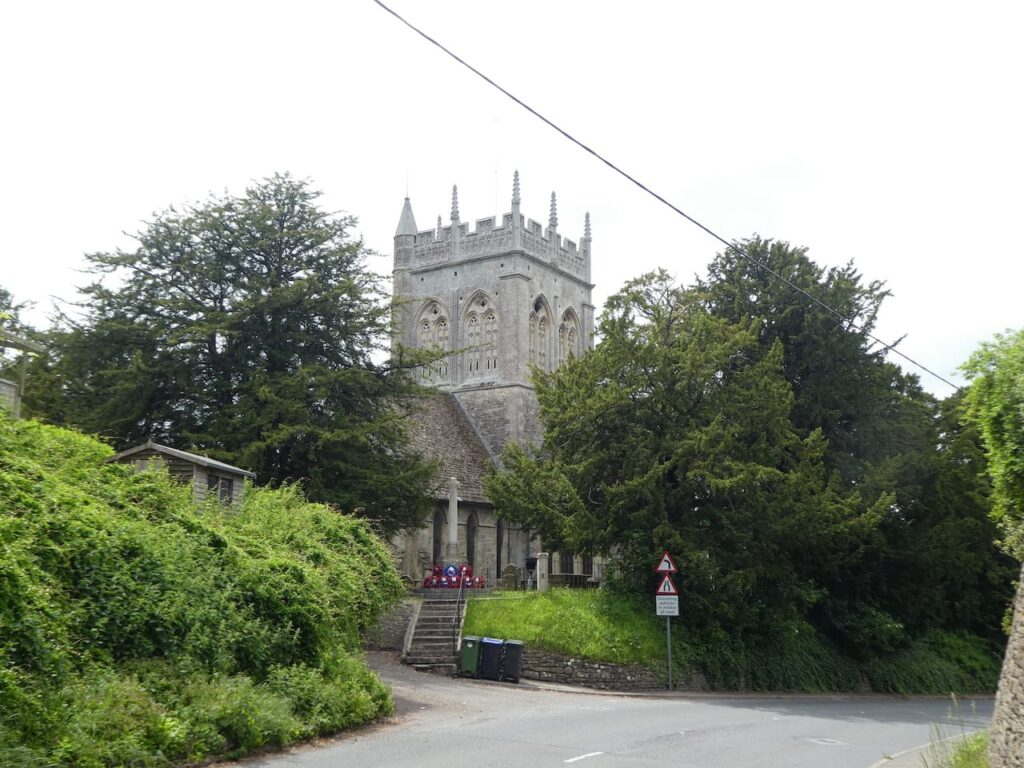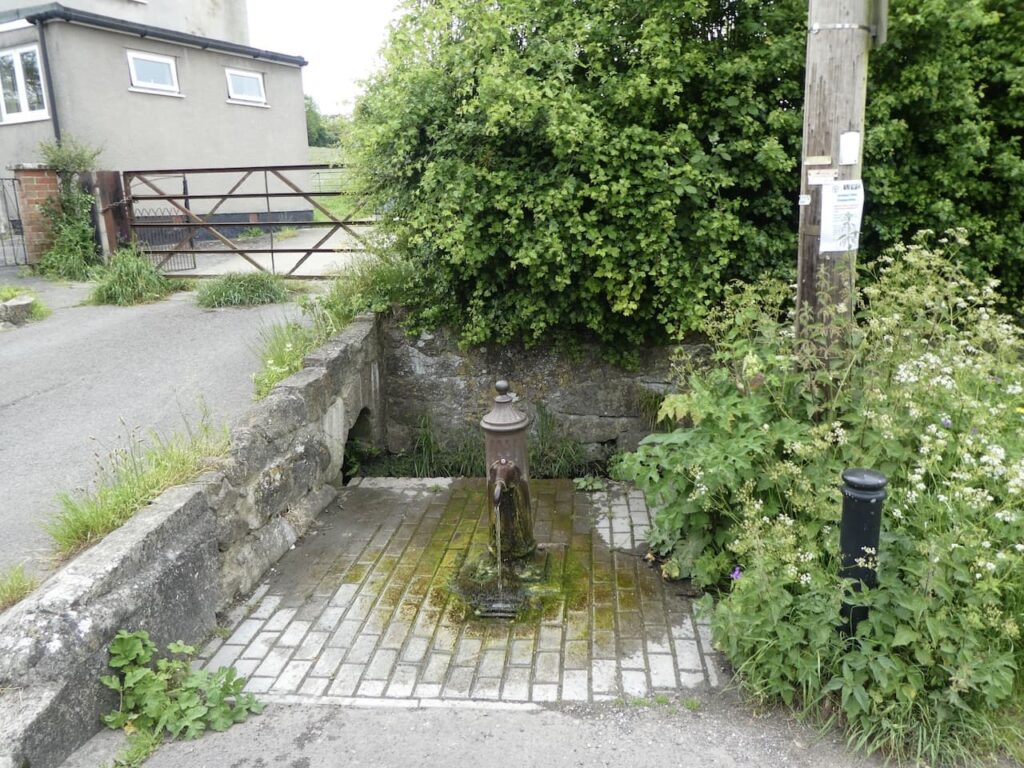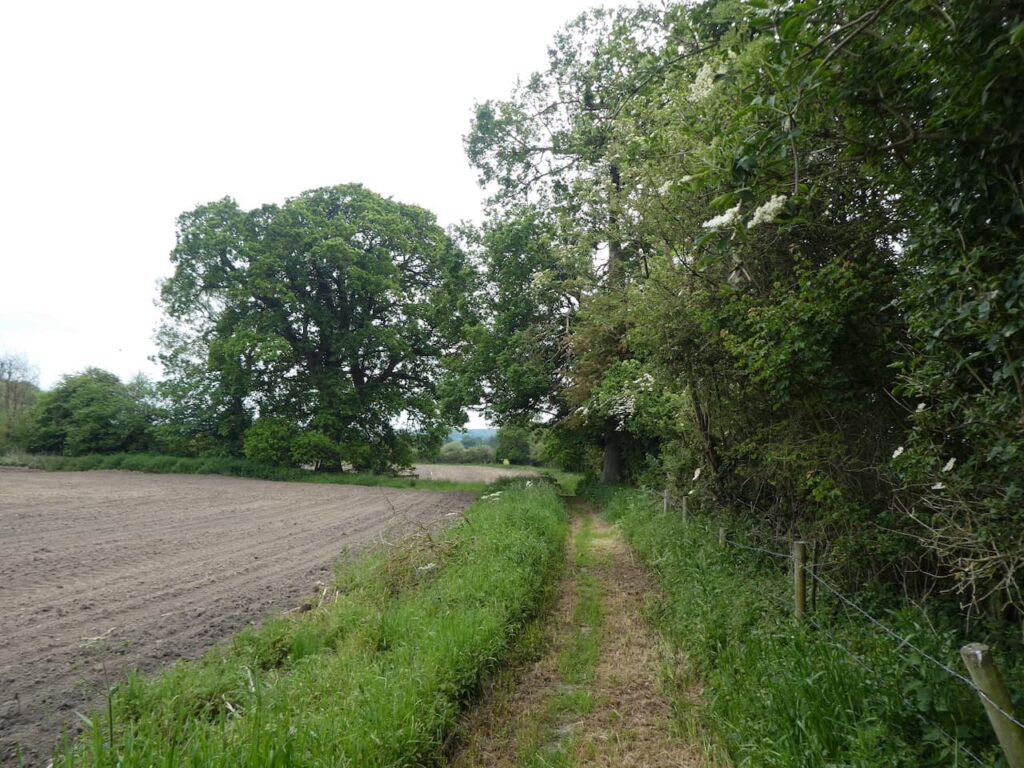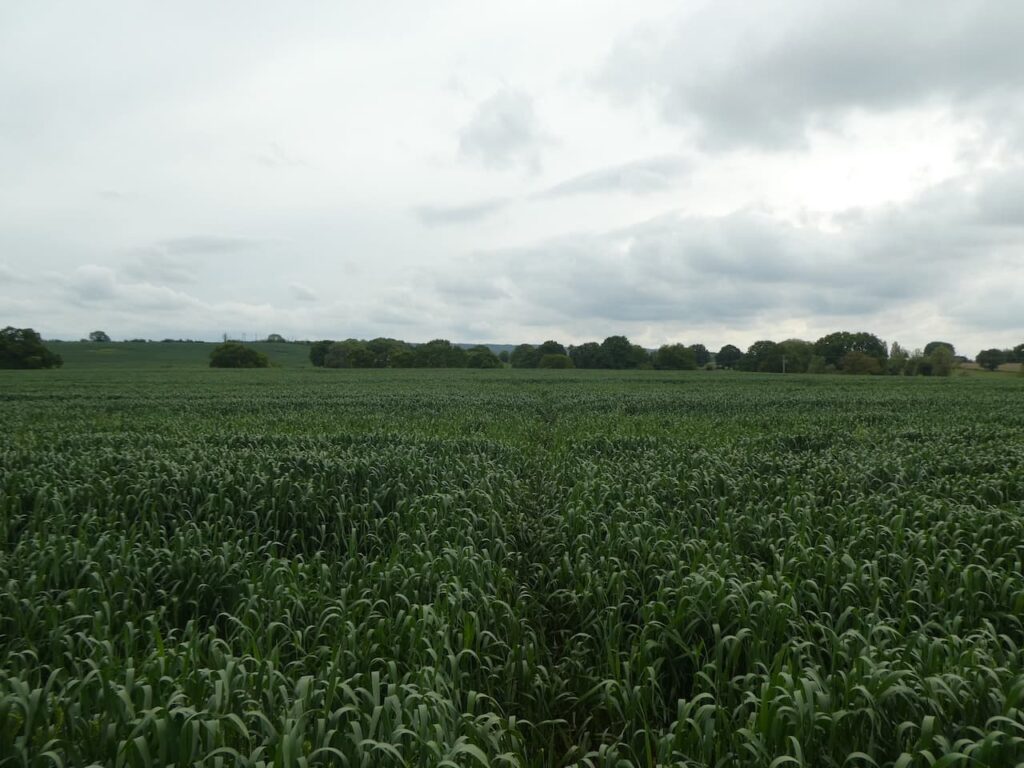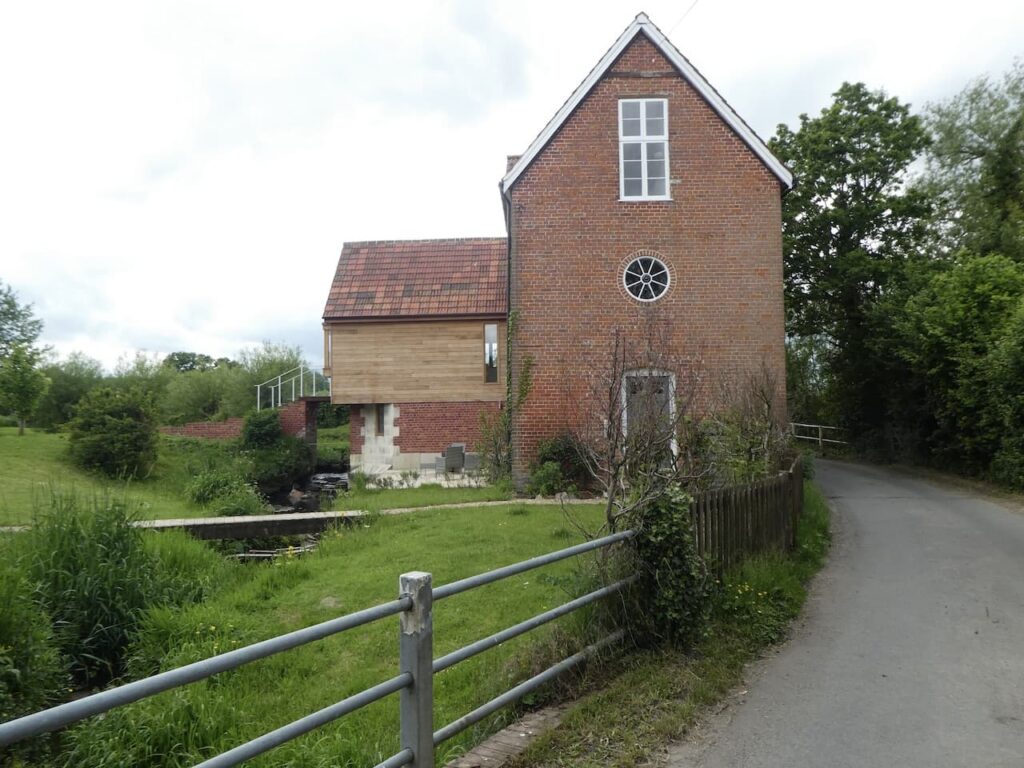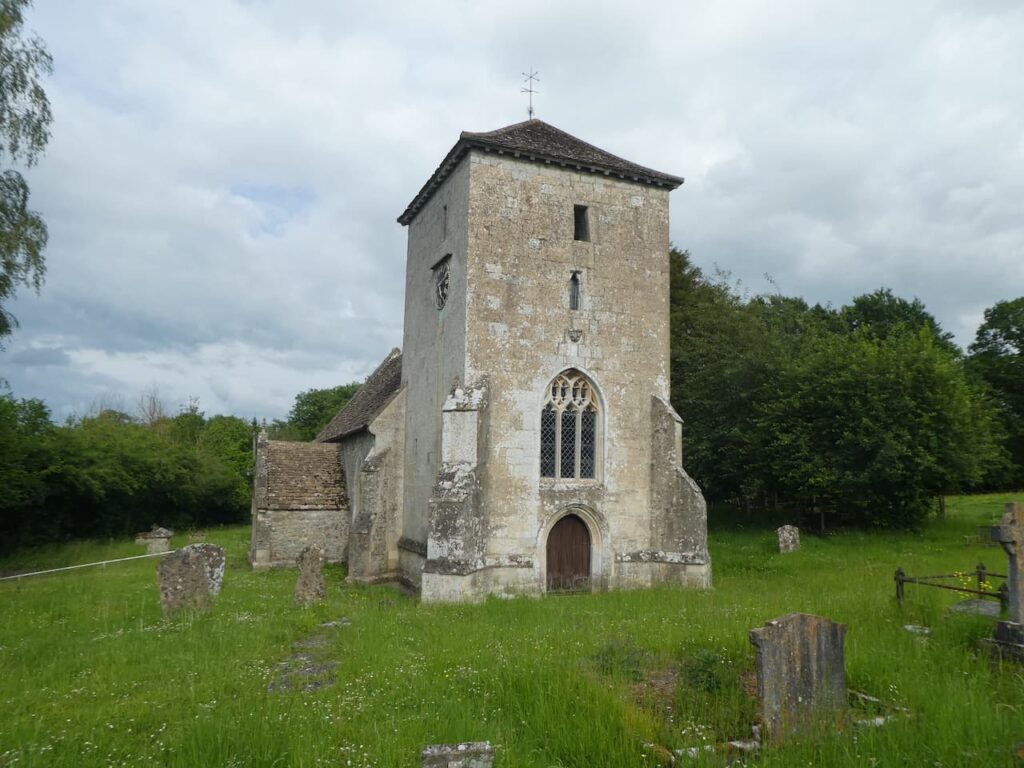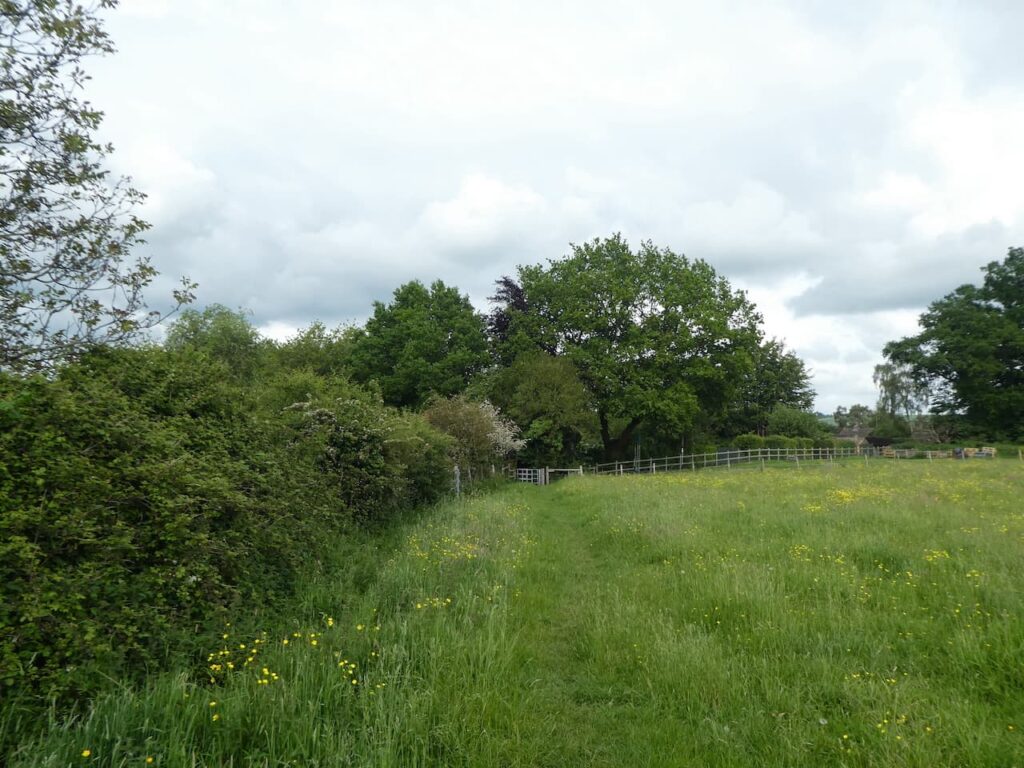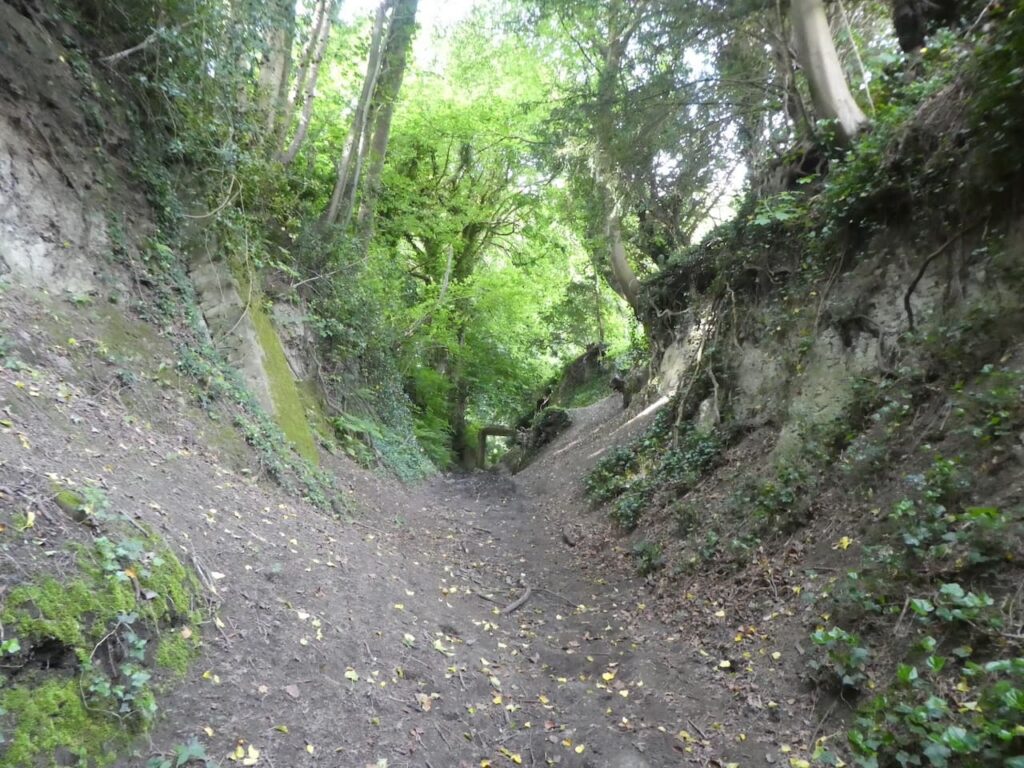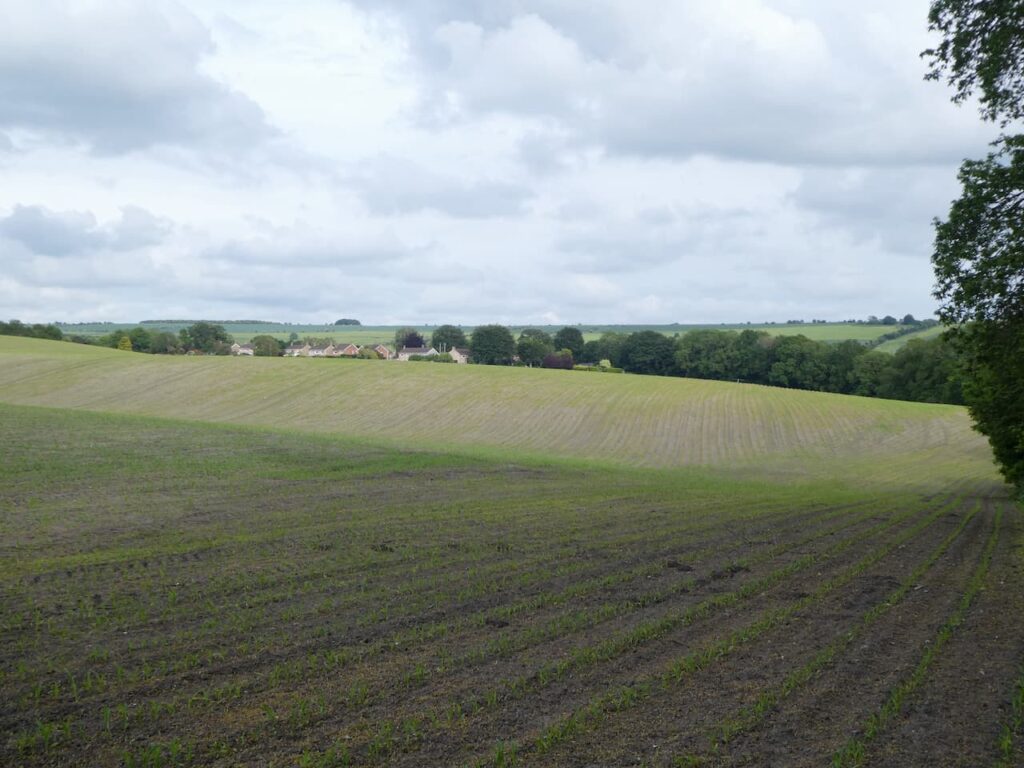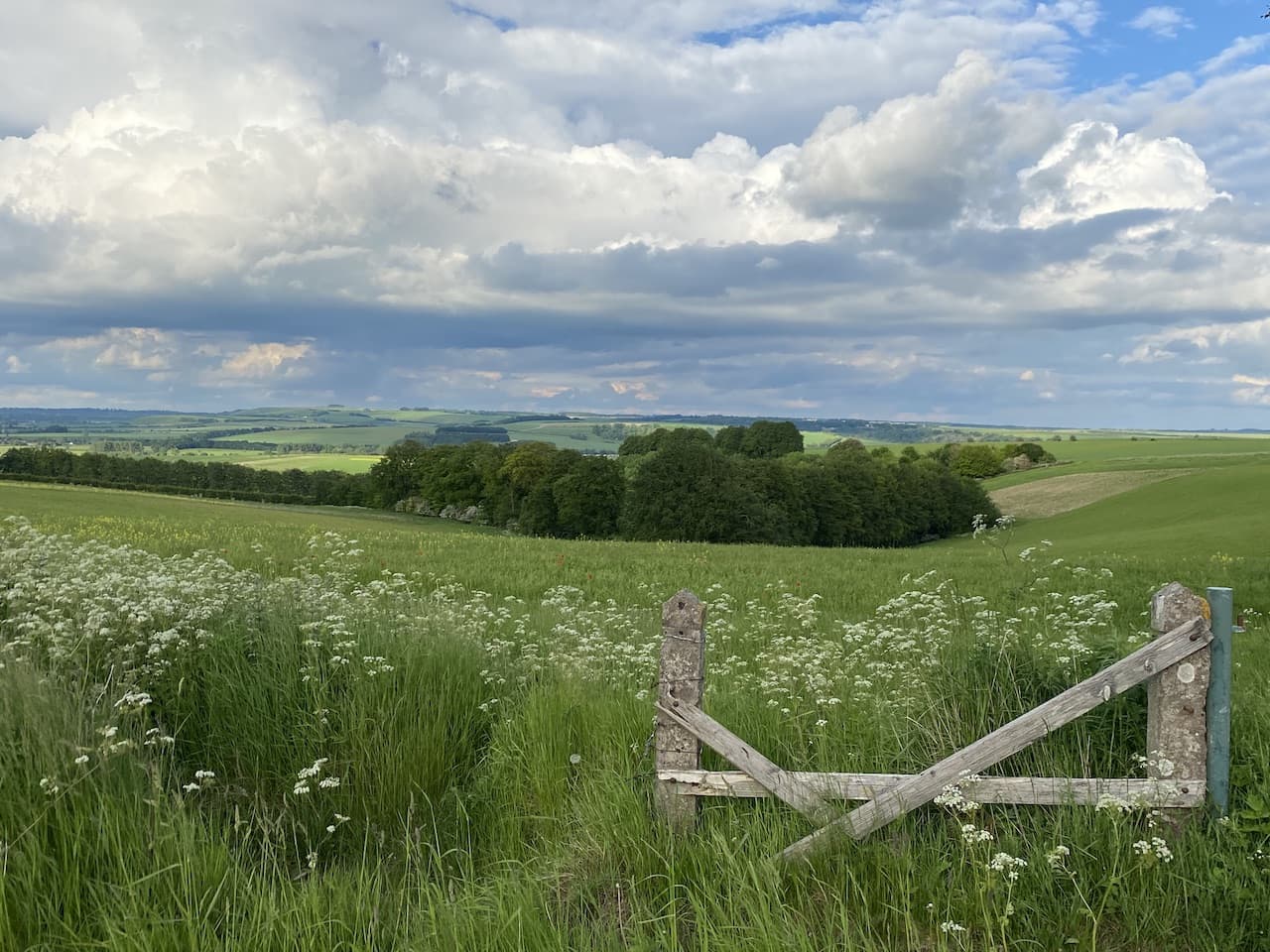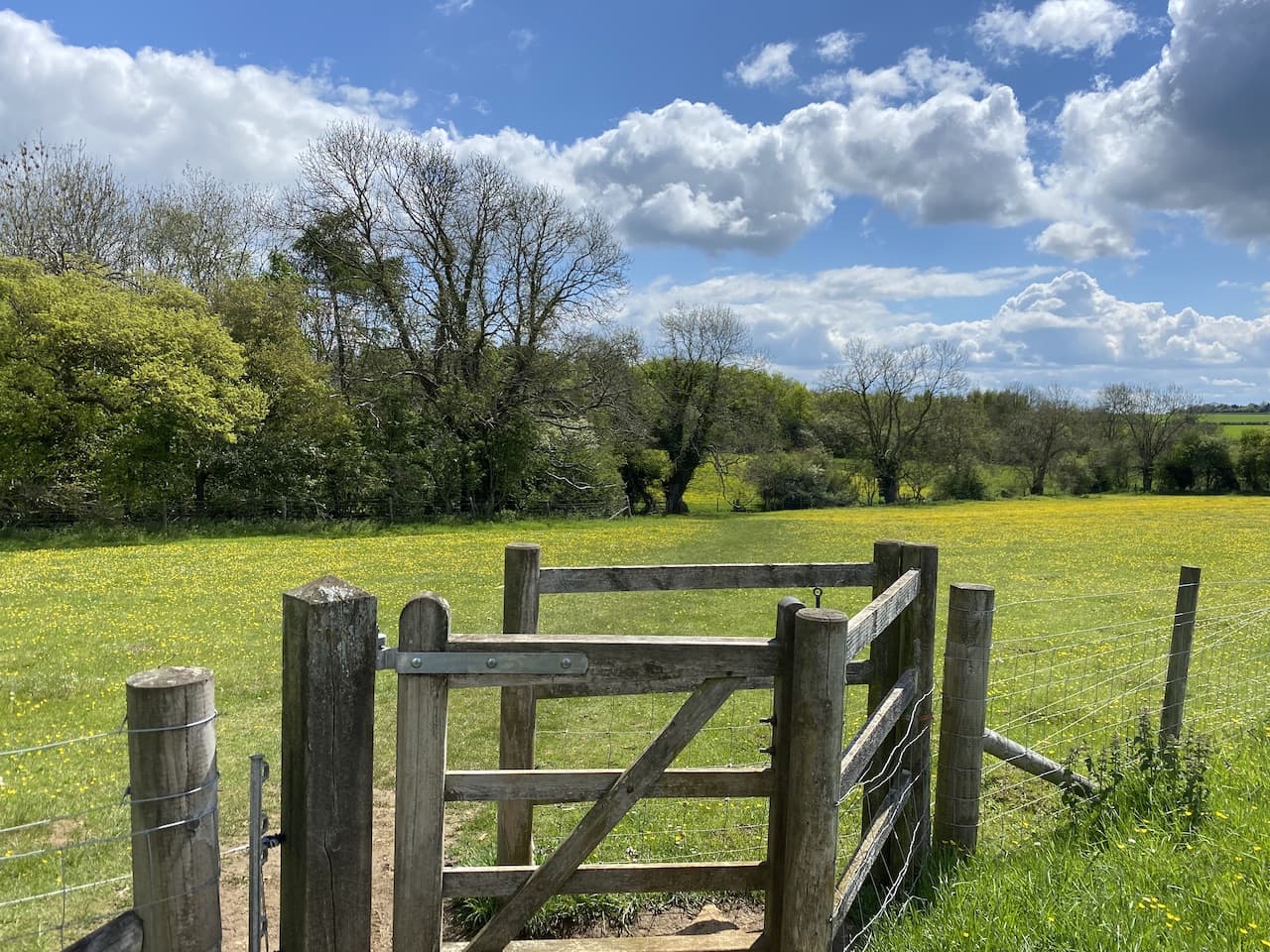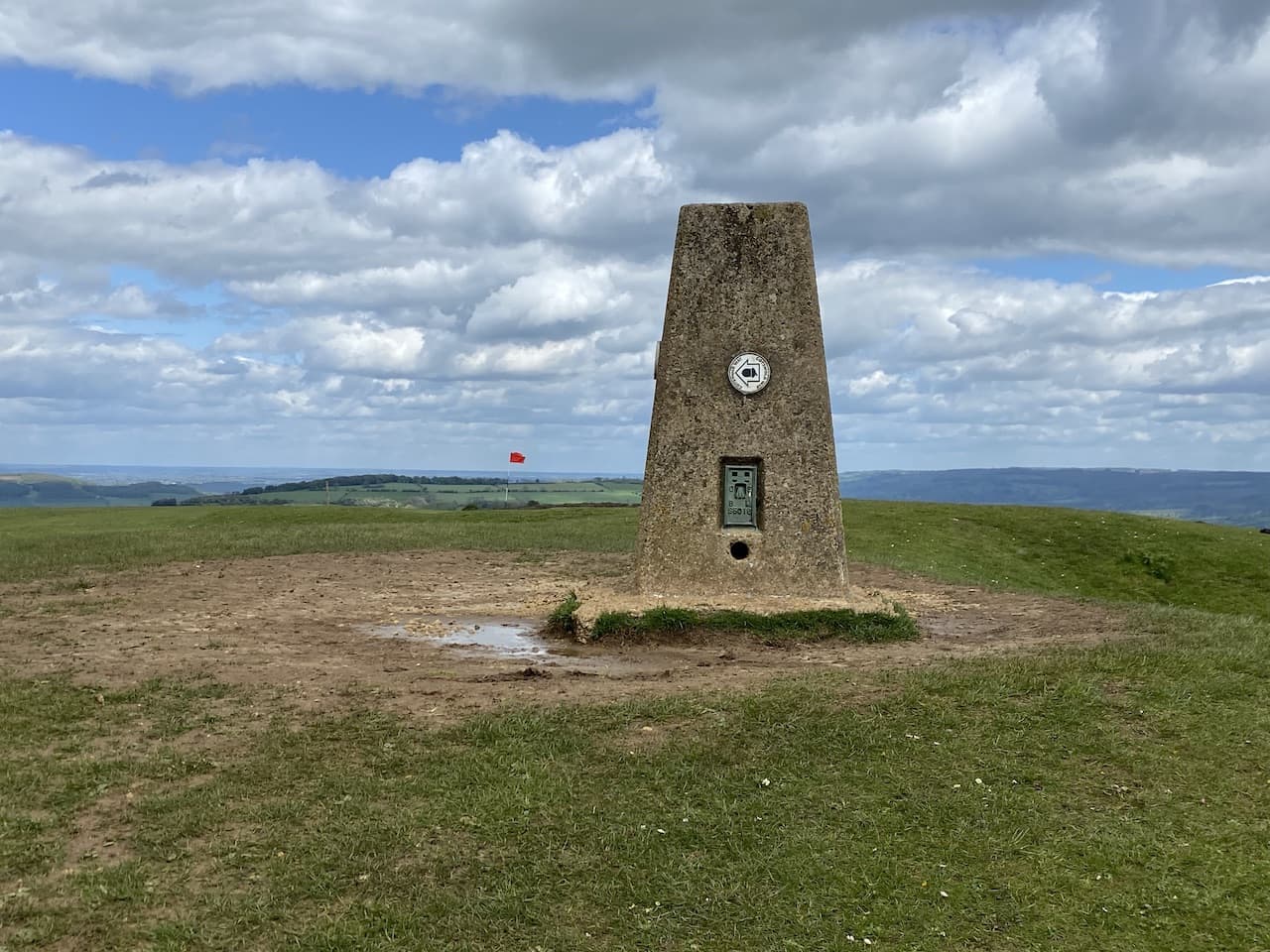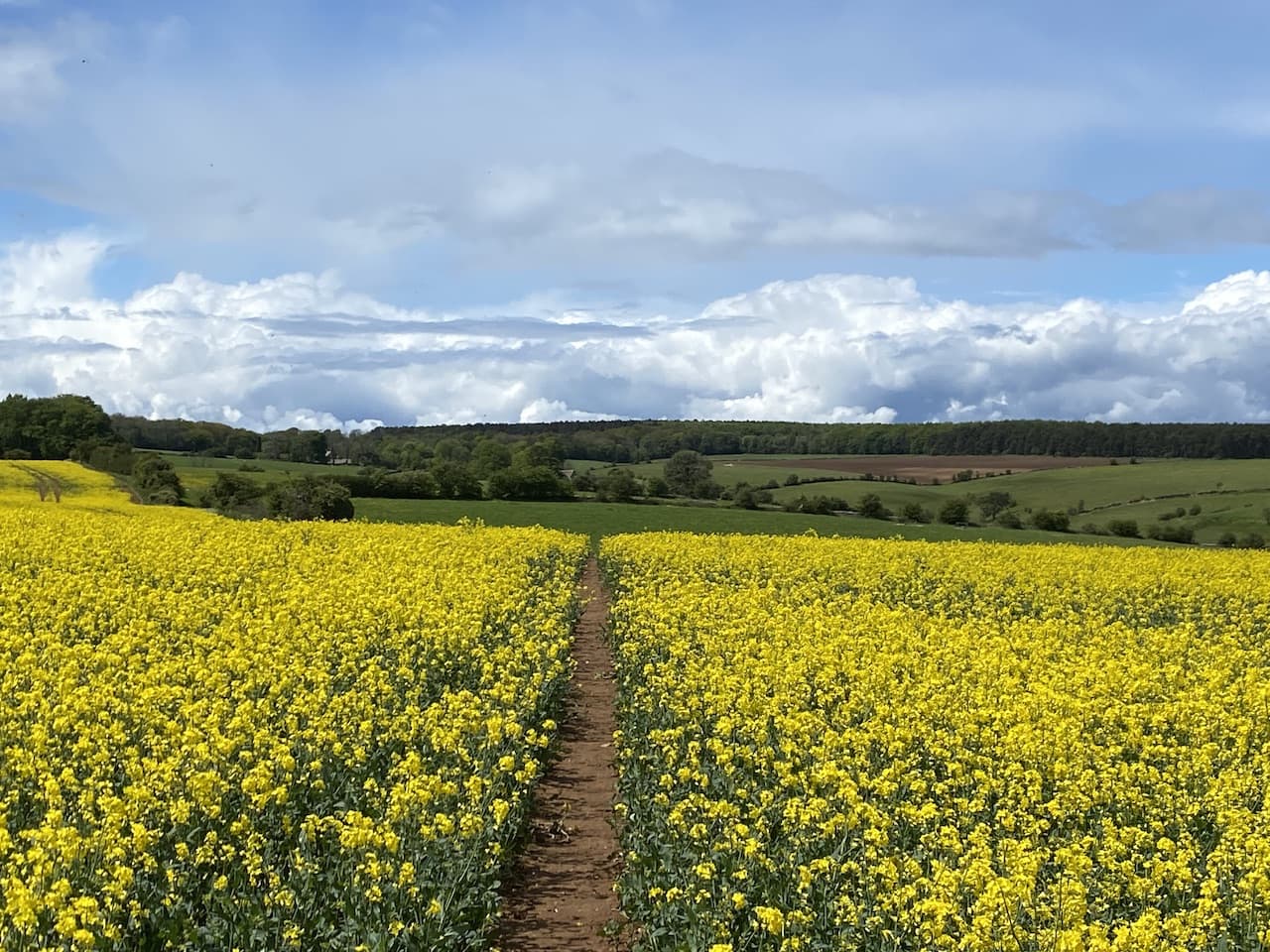One of the benefits of staying at a site not too far from home is we can still keep in touch with friends and today Mandy a close friend from home has popped up to join Lynnie and I on our walk. Mandy and I have walked together in the Vale of Pewsey on a number of occasions so we both know the area pretty well but we have not done today’s walk before.
Leaving the site we turn left to walk up a track following the route of the White Horse Trail. We stay with this long distance path ignoring two paths on the left and then at a fork we stay with the White Horse Trail heading towards Falkner’s Farm.

After passing the farmyard we cross a minor road and continue along a tarmac lane passing old barns. We follow the lane to reach St James’ Church, apparently there was a church on this site back in 963, part of the current building dates from the 13th century. The tower dates from the 15th century and the church underwent a restoration in the 1950’s.

From the church we head through trees to pass the lakes of Manningford Trout Fishery. According to this fishery’s website it has some of the best trout fishing in the south of England.

We stay with the White Horse Trail to reach a minor lane which we cross and then in a field of pasture we leave the trail by taking the right fork to follow a footpath along the edge of the field to reach St Peter’s Church in Manningford Bruce.

This church has elements from the 12th century and was restored in 1882. We decide to pop in side, it is a fine building.

We leave the churchyard via a footpath at the north corner of the graveyard and follow this path besides the walled garden of The Manor.

The footpath enters a field and then at a junction of paths we turn right back onto the White Horse Trail heading towards a minor road. After crossing the road we continue on the Trail and then at a junction of footpaths go across a field to visit the church at Manningford Abbots. Apparently there is no recorded dedication for this church which was rebuilt between 1861-64.

From the church we head back across the field to rejoin the White Horse Trail and follow it heading north through woods to pass over a stream and under power lines to reach a converted mill.

On reaching a minor road we stay with the White Horse Trail and turn left to follow the road past houses and then we take the first right into Dragon Lane. This heads north away from the village and soon becomes a byway which continues across a railway line and then follows a clear path through fields of salad crops.

The path reaches a minor road at Swanborough Tump, there is a sarsen stone and a plaque commemorating the history of this site which was the meeting place of Hundred Moot of Swanborough in Saxon Times. In 871 King Alfred and his brother Ethelred met here on their way to fight the invading Danes and each swore that if either should die in battle the dead man’s children would inherit the lands of their father King Aelthelwulf.

We cross the road and continue north on the White Horse Trail along a tarmac driveway to Cocklebury Farm. After the farm the path reaches the ornate Ladies Bridge over the Kennet and Avon canal. The bridge was built by the canal’s engineer John Rennie in 1808. The design was at the behest of Susannah Wroughton who lived at Wilcot Manor and the reference to Ladies refers to her and her daughter, also named Susannah.

We now join the canal towpath and head east towards Wilcot and soon reach Bowden’s Bridge (No.119).

We continue along the canal to Wilcot Bridge. Here we leave the towpath to join a minor road running parallel to the canal. After a few hundred yards the road bends to the left away from the canal and we start to head steadily uphill. At a junction we go left and then almost immediately right. Reaching a crossroads we go straight across on a road signposted to Huish and Draycot and soon pass Draycot Farm. The road bends to the north and we stay with it for a few hundred yards and then as it turns to the right we go straight on along a footpath into a field.

After a second gate the path starts to steeply ascend Draycot Hill.

At the top of the hill we go through a gate and join the Tan Hill Way and Mid Wilts Way heading west. This is a cracking hill to walk along with numerous inlets with great contours. They look spectacular on the map but even better when viewed from above.

The path is well marked and passes through gates and by a large dew pond. When Mandy and I walked along this hill last November it was raining but today it is clear and the views are spectacular.

We take a slight diversion from the Mids Wilts Way to visit Knap Hill, the site of a Neolithic Camp.

From the top the hill we walk to a gate and through the car park for Walker’s Hill and then cross the road. We turn left to follow the path to the top of Walker’s Hill and Adam’s Grave Long Barrow. This is a stunning spot and the views are outstanding, but Crosby prefers to have a rest while we stop and take in the vista.

We continue downhill across the access land heading towards Alton Barnes, to our right we get a good view of the Alton Barnes White Horse. This horse was first cut in 1812 when Robert Pile of Manor Farm in Alton Barnes paid twenty pounds to John Thorne, known as Jack the Painter, to design and cut the horse. The figure stands on Milk Hill which is the highest hill in Wiltshire at 295 metres and is reported to be the second highest chalk hill in the UK.

After going through a gate we continue downhill to walk on a path besides the edge of a field with the road to our left. This is not marked on the map as a path, but is clearly well used and is obviously a permissive path. It takes us across the road and then continues downhill besides paddocks. As it nears a junction the path turns to the left and continues besides the road heading towards Alton Priors. We join the road briefly and then turn right down a lane besides a stunning old thatched barn which is packed with old farm machinery.

Now we continue down the lane, Village Street, and follow this to a gate with a turnstile beside it. We enter the field and walk the short distance to All Saints church. This church dates from the 12th century but it was declared redundant by the Church of England in 1972 and is now in the care of the Churches Conservation Trust.

In the churchyard there is a Yew Tree believed to be 1,700 years old.

From the church we follow a path across a stream and through further turnstile gates.

We follow the paved footpath across a field of pasture and head towards St Mary’s Church in Alton Barnes. The two churches are only a few hundred yards apart. It would appear that the two congregations of Alton Barnes and Alton Priors were separated in 1660. From the church we head along the lane to reach a minor road where we turn left and follow it into Honeystreet where we join the towpath of the Kennet and Avon Canal and head east.

I have walked this section of the canal on a number of occasions and noticed a sign into a field to a memorial. Although off the footpath I assume that the fact it is signed means there is access to the field. We enter the field and follow the fence line to reach the memorial which is dedicated to Flt Sgt Thomas C Newton and Sgt John A C Wilson, both of the RAFVR, who lost their lives when their Albemarle Bomber V1755 of No 22 HGCU RAF Keevil crashed nearby on 25th October 1944.

We carry on along the hedge line and return to the towpath. This is a cracking section of the canal.

We are only on the canal towpath for a short while, leaving at the next bridge to take a path that heads to the right towards the village of Woodborough. Reaching the outskirts of the village we leave the lane to enter the churchyard of St Mary Magdalene Church which was built in 1850.

We leave the church by the main gate and follow the road south through the village, at a junction we turn right and then after a hundred yards take a footpath on the left going towards the railway line. After crossing the line with care, we continue on a path which soon goes besides paddocks to emerge in Bottlesford close to the Seven Stars pub, we turn right along the lane.
On reaching a junction we go straight over to walk along Gores Lane which goes between cottages and then reaches fields. At a junction of paths we turn left and head south, soon crossing a minor road, Yard’s Lane, before continuing on the way-marked path through fields to reach meadows close to the River Avon.

At a fork in the path we keep to the right soon arriving at the western edge of Wilsford. We turn left and follow the road through the village to reach Holy Cross Church, this is the seventh church we have passed on our walk!

Leaving the church we continue through the village heading east and then on reaching a road junction go south and then after a couple of hundred yards take a bridleway on the left which heads across fields towards Charlton St Peter. To our right is a fine example of ancient field systems known as Strip Lynchets.

At a junction of paths we continue straight on with the Charlton Cat tea rooms in front of us.

This path brings us back into Charlton St Peter where we turn left to cross the River Avon and return to the caravan site. It has been a cracking walk through the Pewsey Vale with stunning views throughout. Wiltshire really is a cracking county to walk in.
You can view this 17 mile walk on OS Maps and download the GPX File Here
To follow my walk, you will need Ordnance Survey Explorer Map 130 – Salisbury & Stonehenge: and OS Explorer Map 157 – Marlborough & Savernake Forest
11th June 2021
© Two Dogs and an Awning (2021)
All information on this site is provided free of charge and in good faith and no liability is accepted in respect of damage, loss or injury which might result from it. To the best of my knowledge the routes are entirely on public rights of way or within areas that are open for public access.
Walking can be hazardous and is done entirely at your own risk. It is your responsibility to check your route and navigate using a map and compass.
